Introduction
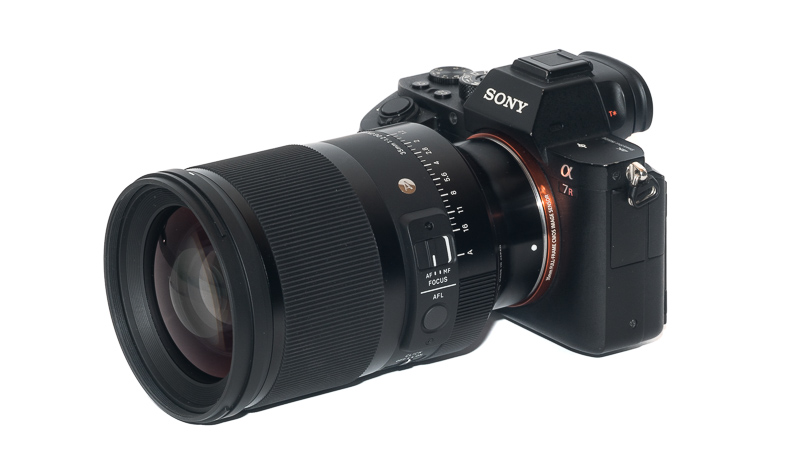
The Sigma 35mm 1.2 Art DG DN is the first true full frame mirrorless lens designed by Sigma and also the first full frame 35mm f/1.2 AF lens. Is this finally the high quality 35mm lens we have been waiting for?
Update 12/19: experiences after 4 months of usage added
Sample Images


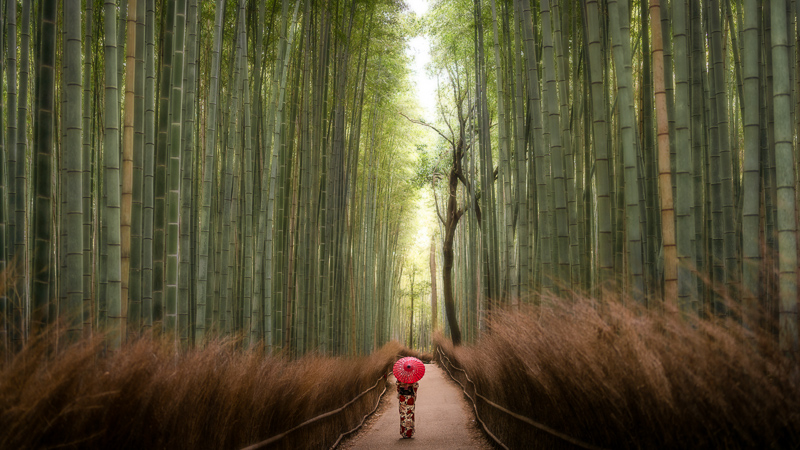


Most of the sample images in this review can be found in full resolution here.
Contents
Specifications / Version History
In addition to the Sigma 35mm 1.4 Art – which was the first lens of Sigma’s Global Vision lens lineup and the first lens of the Art series – we now have this Sigma 35mm 1.2 Art DG DN, a true mirrorless design, which has the following specifications:
-
- Diameter: 88 mm
- Field of view: 63.4° (diagonally)*
- Length: 137 mm
- Weight: 1082g (without hood[56g] and caps)
- Filter Diameter: 82 mm
- Number of Aperture Blades: 11 (rounded)
- Elements/Groups: 17/12
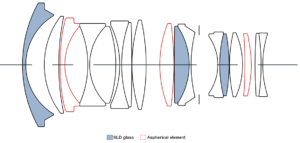
- Close Focusing Distance: 0.30 m
- Maximum Magnification: 1:5.1
- Mount: Sony-E
You may also have a look at the official page.
*Despite Sigma claiming the 35mm 1.2 Art and the Sigma 35mm 1.4 Art both having a diagonal viewing angle of 63.4° the older f/1.4 version is wider. Focal lengths are usually subject to rounding and as I did not properly measure either I cannot tell you which is closer to actual 35mm.
you can buy this lens from amazon.com | B&H | ebay.com | ebay.de for about $1499/1529€
Operation
Handling
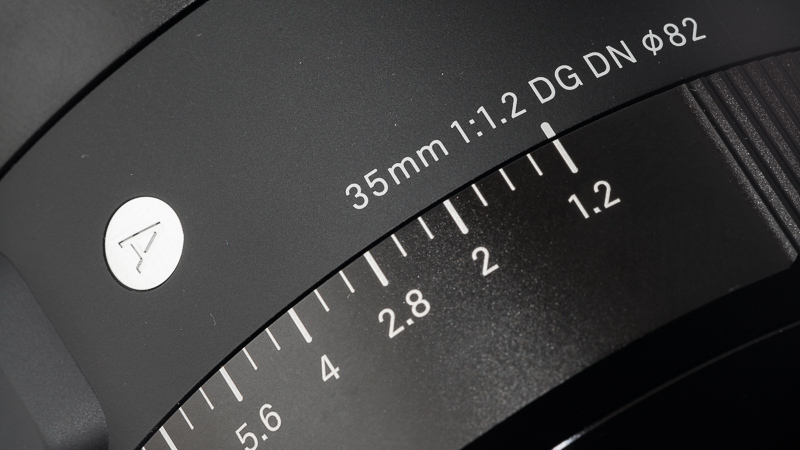
Compared to the former Sigma lenses we are in for a few surprises here. In terms of handling this new line of Sigma lenses feels almost exactly like a Sony GM lens.
We have an aperture ring with 1/3rd of a stop click stops and de-cklick lever (just like the GM lenses) we have an AF/MF switch and a focus hold button (just like the GM lenses) and the manual focus has a linear coupling.
The only differences compared to the GM lenses like the 85mm 1.4, 135mm 1.8 or 24mm 1.4 are the position of the AF/MF switch, which is above the focus hold button, not below (I prefer Sigma’s design here) and the focus throw.
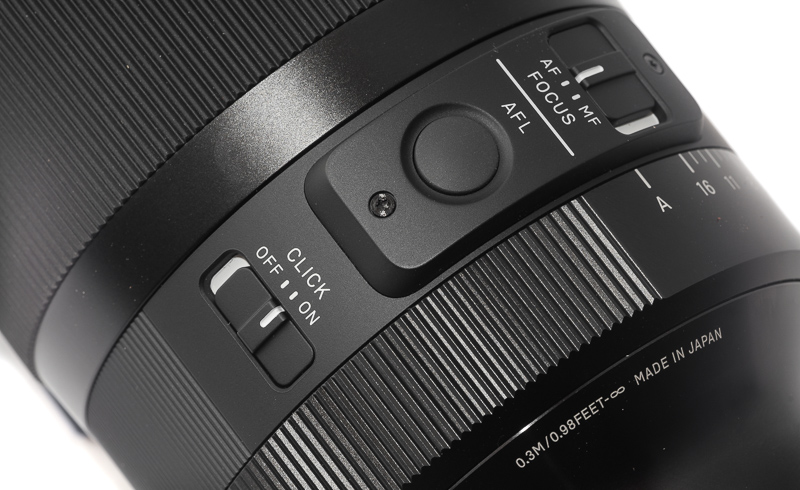
The GM primes I tried all have exactly 180° focus throw from infinity to the minimum focus distance. Sigma seems to have thought this is way too little and so the 35mm 1.2 has a ~ 540° focus throw.
This is good for finetuning focus but in the field it felt a bit too long to be honest. The resistance is really nice though, better (higher) than that of e.g. the Sony 85mm 1.4 GM.
There is also no physical distance scale that we know from the Sigma E-mount lenses with built-in adapter tube.
There is no denying, this is a huge lens. Already the Sigma 35mm 1.4 Art was a very big lens, but it is dwarfed by its f/1.2 brother:
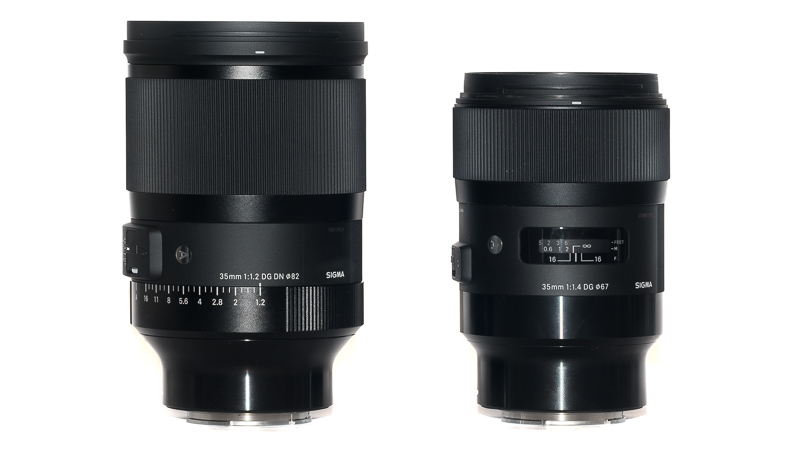
A bayonet type lens hood is also part of the package which also offers improved build quality like the ones we know from the GM series with a release button and a mix of polycarbonate and rubber (which is really good at attracting dust).
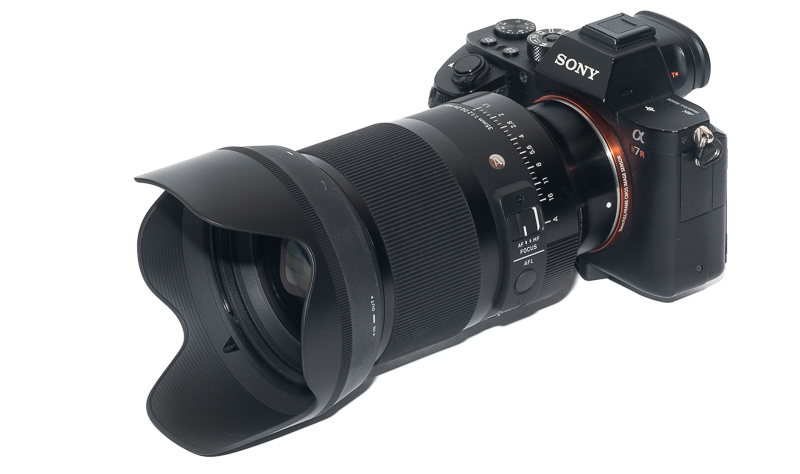
Build Quality
The outside is made from the same high quality polycarbonate we already know from the other Sigma Global Vision lenses.
I cannot tell you much about the long term reliablity (yet) or about the internal parts, but maybe we get to see a teardown by lens rentals one day.
Sigma claims the lens is dust- and splash proof and like all of Sigma’s full frame E-mount lenses there is a rubber gasket to be found at the bayonet.
Autofocus
I have only used the lens for slow moving adults and encountered no problems with the autofocus. If you primarily want to take pictures of running animals or small children you may come to a different conclusion. It was good enough on the A7rII to capture this constantly moving swan at f/1.7 though:
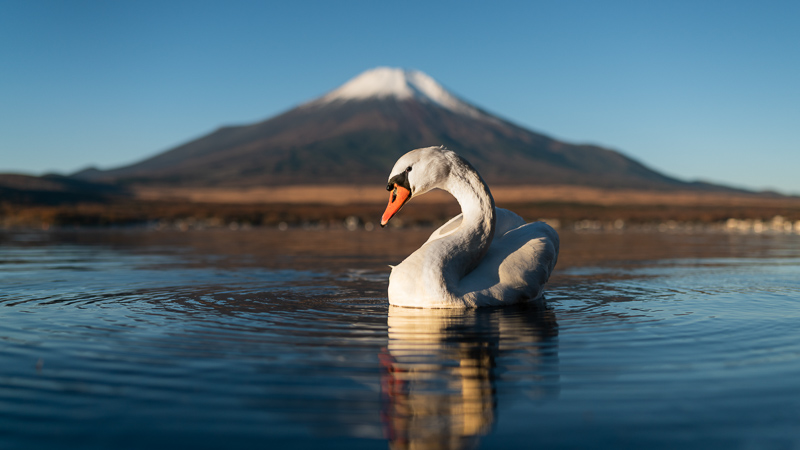
Eye-AF also works generally well, but you have to be close to your subject for the camera to actually recognize an eye in the frame (this is true for all wide angle lenses). So at the distances I was mostly using this lens the cameras usually resorted back to face-detect mode.
So far I saw little difference in terms of speed and accuracy compared to the Sigma 35mm 1.4 Art or the Sony FE 35mm 1.4 ZA.
Vignetting
light falloff
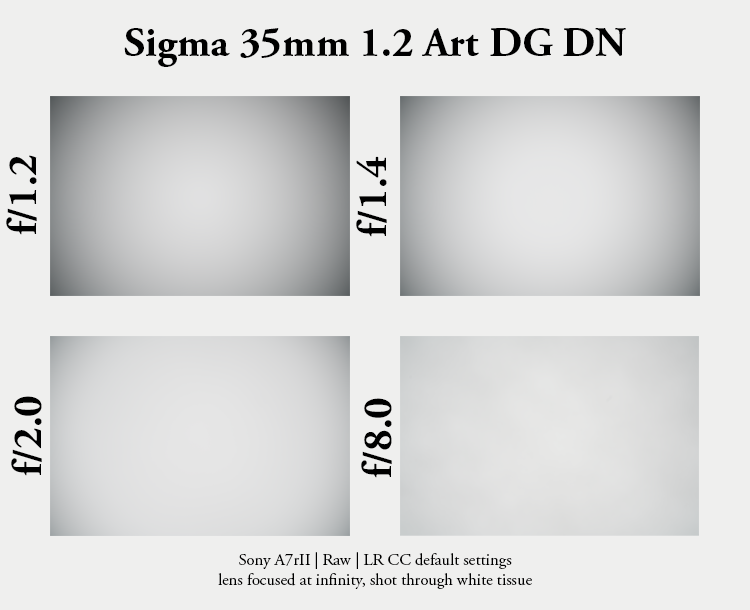
Wide open there is strong light falloff of roughly 2.9 EV, stopped down to f/1.4 this improves to 2.6 EV, stopped down to f/2.0 it is 1.9 EV and further improves to 0.9 EV at f/8.0. You can either correct this in Lightroom as soon as there is a profile available or directly in camera.
These values are comparable to most of the 35mm f/1.4 lenses and especially wide open they are better than those of smaller f/1.2 lenses like the Voigtlander 40mm 1.2 E or 50mm 1.2 E.
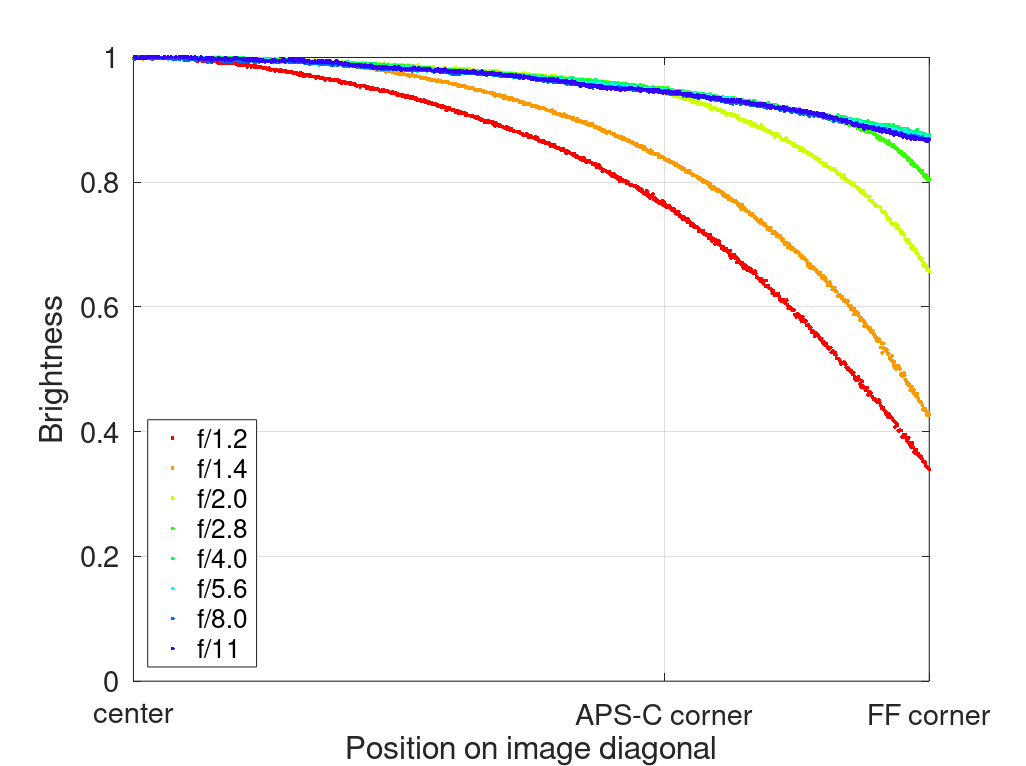
It is recommended to have a look at this article first to get an idea how this brightness graph works.
color cast
I did not detect any color cast issues with this lens.
optical vignetting
Very fast lenses often show optical vignetting. Without going too much into technical details optical vignetting leads to the truncation of light circles towards the borders of the frame.
In the center of the frame almost every lens will render a perfect circle, but only lenses with very low optical vignetting will keep this shape in the corners.
So in the following comparison we move from the center (left) to the extreme corner (right) and see how the shape of the light circle changes.
This Sigma 35mm 1.2 Art does show a noticeable amount of optical vignetting in the corners. The Sigma 35mm 1.4 Art and the Sony FE 35mm 1.4 ZA have slightly less deformed light circles in the corners at shared apertures.
There is something positive though: onion ring structures, while still visible in the new lens, are noticeably less pronounced.
I did not shoot these lenses side by side. The circles would be bigger on the f/1.2 lens in the center when focused at the same distance and cropped to the same size.
Performance in this subject is highly dependant on the focus distance and the distance to the light source, so it is possible to get other results at other distances.
Sharpness
infinity
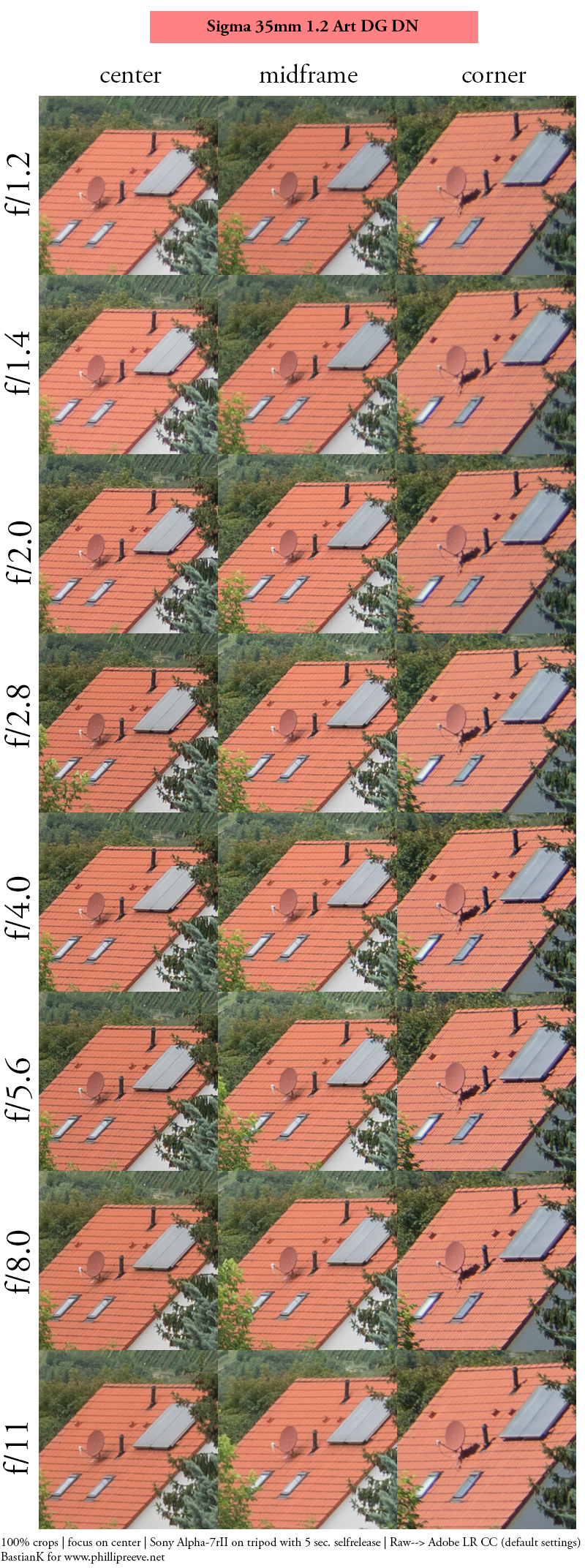
The center sharpness is good af f/1.2, contrary to most other f/1.2 lenses we see almost no spherical aberration (glow), the peak performance in the center is probably around f/2.8.
Surprisingly midframe and corners are also good to very good already at f/1.2 (minimal field curvature, if any) and also show only little signs of astigmatism or coma. Just have a look at the Voigtlander 50mm 1.2 E review to see what I am talking about. Peak performance here is reached at f/4.0 to f/5.6.
The lens is very usable from f/1.2 even for infinity landscape shooting though. Already at f/8.0 you see the negative influence of diffraction on center and midzone.
The Sigma 35mm 1.2 Art easily beats all the 35mm 1.4 lenses I tried/reviewed in this category. Only the Sigma 40mm 1.4 Art performs on a similar level.
The exposure of the f/1.2 to f/2.0 corner crops has been lifted in post to reveal more details.
portrait distance
For portraiture it isn’t so important how flat the field is, it is more interesting to see what the sharpness is like when focused at different parts of the frame to take field curvature out of the equasion.
This is what I did here, I refocused for every shot to get the best possible result at different locations in the frame (center, inner midframe, outer midframe and corner).
Focus distance was roughly 1,0 m and the circle of the dollar bill is more or less the size of a human eye.
I will compare it directly to the Sigma 35mm 1.4 Art, to see what the improvements in this regard are.
Sigma 35mm 1.2 Art <—> Sigma 35mm 1.4 Art
So far my reference in this category was the Voigtlander VM 35mm 1.7 (which is much better than either Sigma 35mm 1.4 Art or Sony FE 35mm 1.4 ZA here) but this Sigma 35mm 1.2 Art is amazing at portrait distance. An absolutely outstanding performance.
close (0.30 m, 1:5.1)
100% crops from center, A7rII
The Sigma 35mm 1.2 Art offers a decent reproduction ratio of 1:5.1 to start with. Close focus performance is an area where the smaller fast lenses like the Voigtlander 40mm 1.2 E or 50mm 1.2 E struggle, as they don’t feature a floating elements design.
The lens reviewed here most certainly does and the performance at the minimum focus distance can be described as decent at f/1.2, good at f/2.0, very good at f/2.8 and excellent at f/4.0. Across frame performance is also pretty good here with only minimal field curvature.
Flare resistance
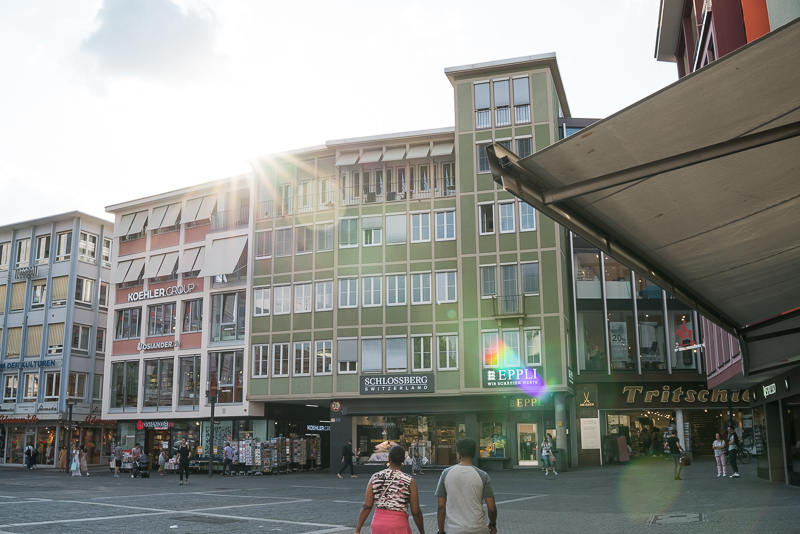
The Sigma 35mm 1.2 Art has a very high element count (17) and lenses with a high number of elements rarely fare well in this category.
On top you can see the worst result I could produce. Depending on the position of the light source in the frame you can also catch some veiling flare instead of rainbow artifacts. The contrast stays on a high level though.
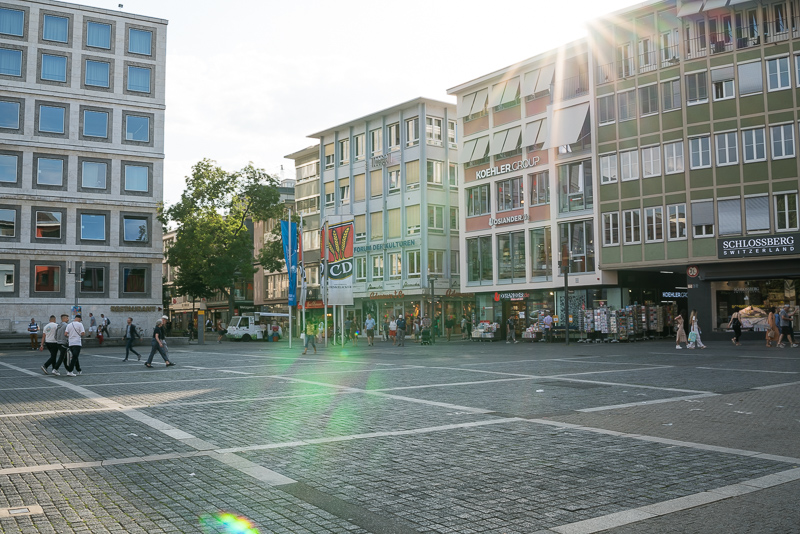
In the situations above the hood made no difference.
Also with strong light sources outside the frame you can catch some artifacts, here shading with my hand helped a bit though:
The performance is similar to the Sigma 35mm 1.4 Art. Voigtlander VM 35mm 1.7 Ultron and also the Sony FE 35mm 1.4 ZA fare better in this category.
Coma
In the early marketing material Sigma claimed coma correction was high on their priority list for this lens, so let us have a look how this turns out.
While the lens is not free of coma wide open it is certainly one of the better 35mm lenses. By stopping down to f/2.8 this aberration seems to be completely gone.
100% crops from extreme corner, focused on corner, A7rII
Stars are slightly more forgiving than city lights, so let us have a look at those and how this lens compares to its predecessor:
100% crops from extreme corner, focused on corner, A7rII
There is no denying the f/1.2 version fares better here and noticeably so, but if you thought this lens was completely free of coma at f/1.2 you might be disappointed.
I do find it hard to name a better lens in this regard though, but I haven’t tried the Samyang 35mm 1.2 XP and the Canon EF 35mm 1.4 L II yet.
Distortion
The lens shows a noticeable amount of non-wavy barrel distortion. For jpegs this can be corrected in camera, for raws it can either be corrected by dialing in +9 in Photoshop/Lightroom or using the lens specific profile that has been added to Adobe products on 14th August 2019.
Bokeh

The bokeh rendering is surely the main reason to get a 35mm f/1.2 lens. It surely is for me, so let us have a closer look how it performs at different distances.
In close focus scenarios the bokeh is really nice, smooth and with very noticeable subject separation. At f/1.2 there is a noticeable amount of optical vignetting which is pretty much completely gone when stopping down to f/2.5.

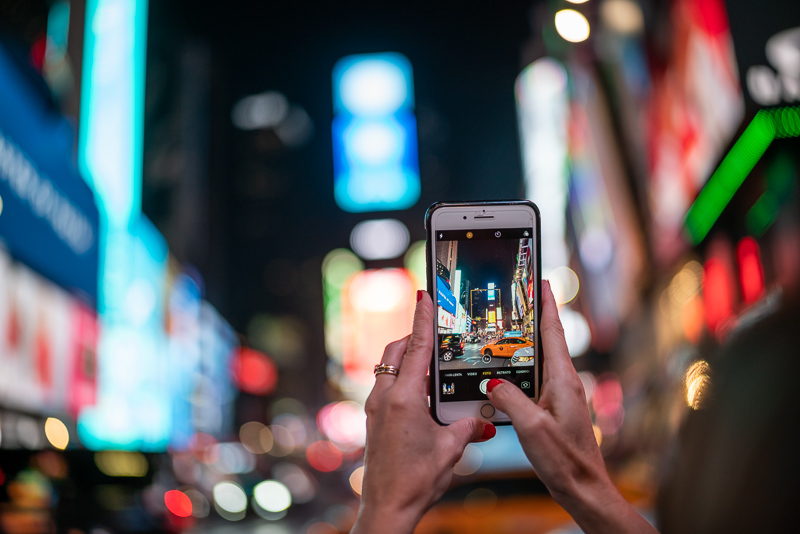

At half body distances the bokeh is still really nice in my opinion and the high contrast in the focal plane leads to a noticeable subject separation (3D pop as some like to call it):
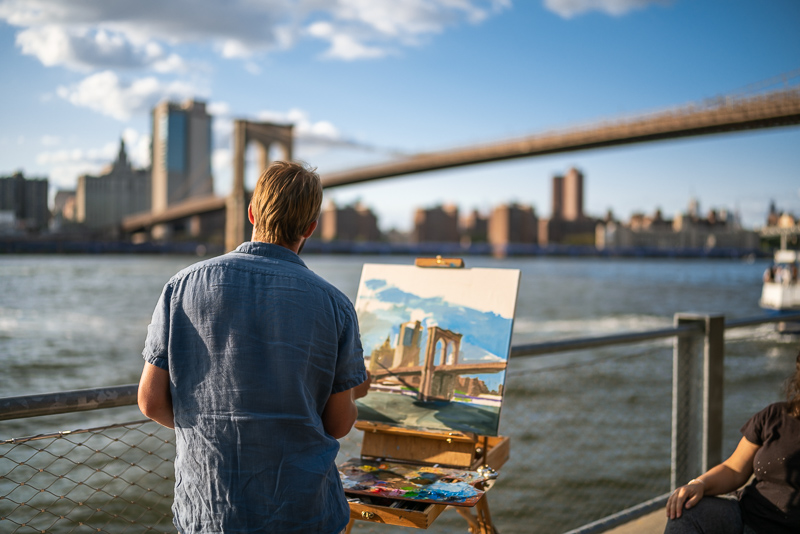
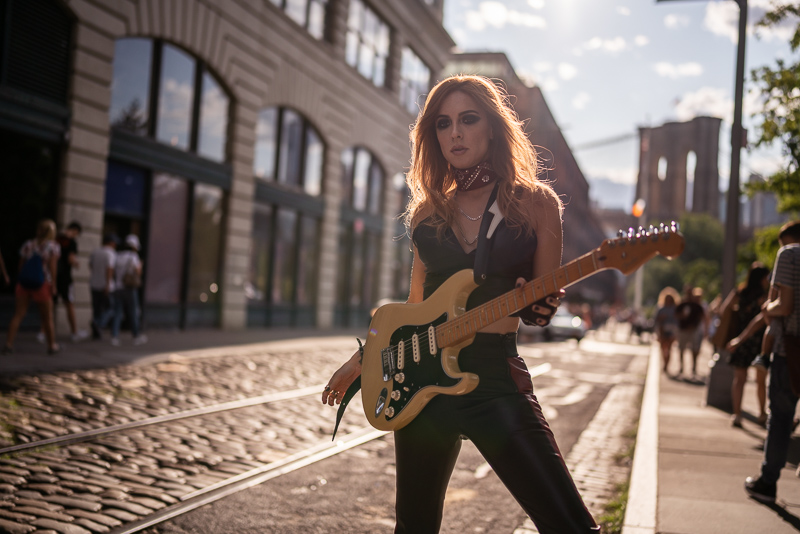
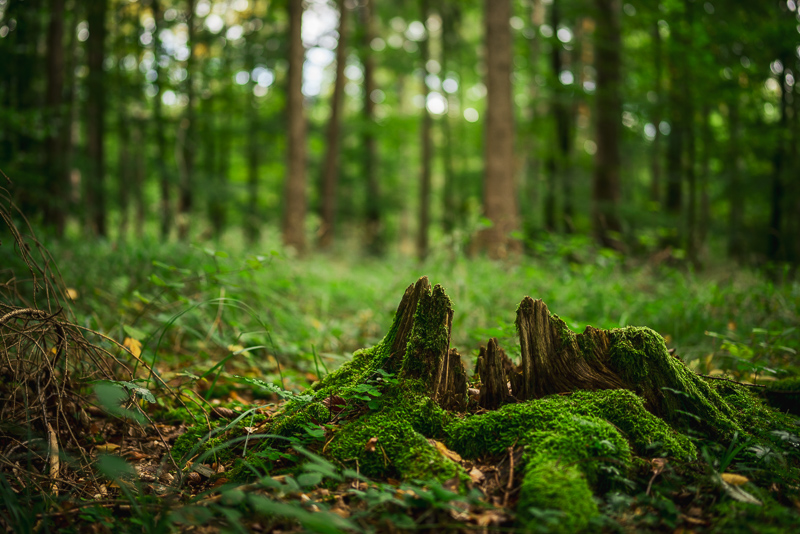
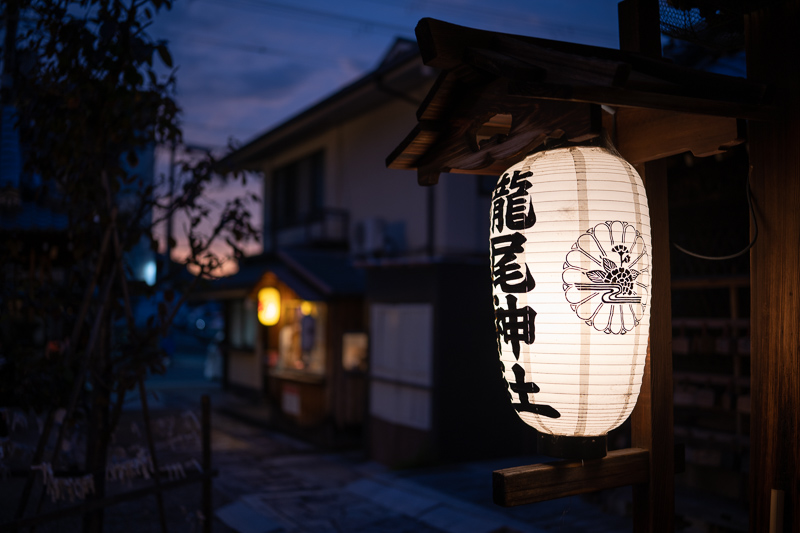
At longer distances (e.g. full body portraits) where the transition zone overlaps with the background many fast wide angle lenses struggle. You can not expect performance similar to a lens like an 85mm f/1.4 here, but the corner bokeh is the best I have seen from a 35mm lens at f/1.4 or faster yet:
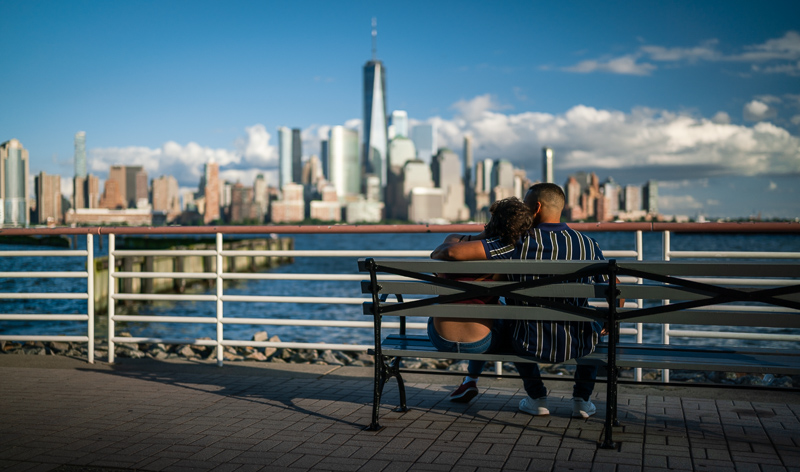
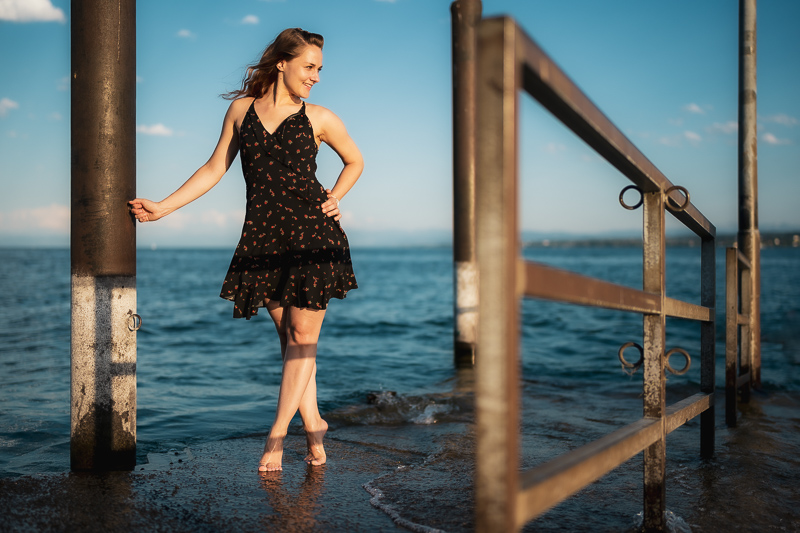
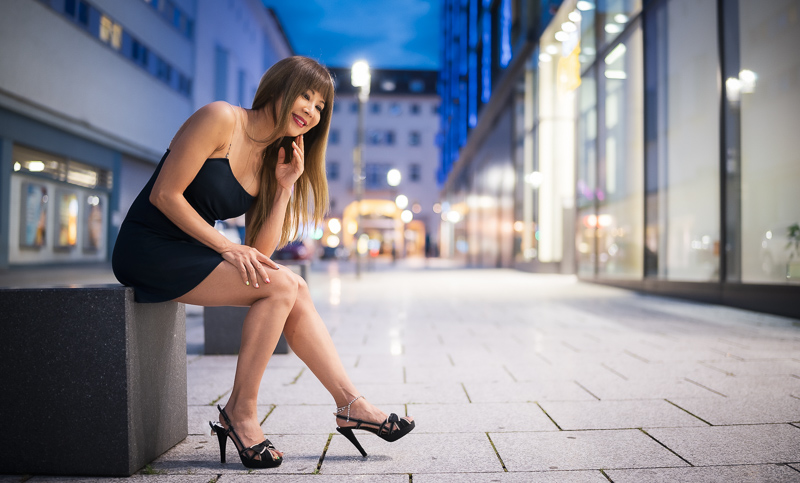
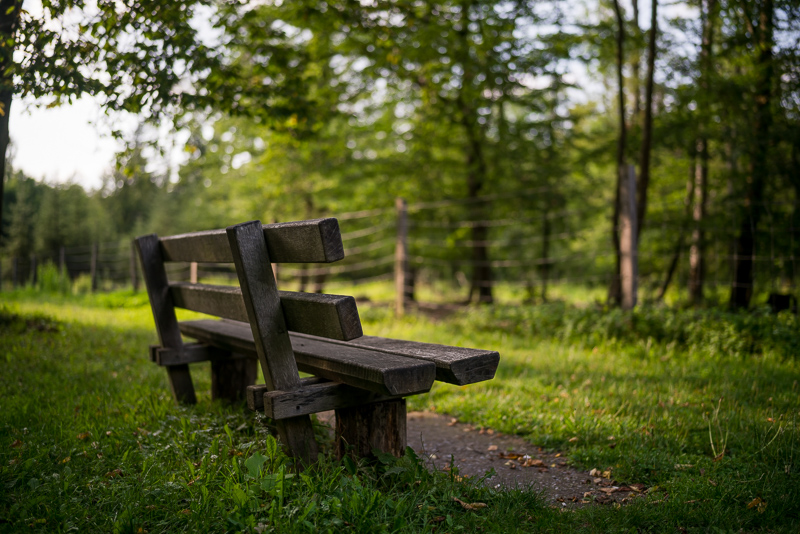
To be honest I did not have highest expectations when it comes to the bokeh rendering based on the former fast yet wide Sigma lenses, but this seems to be a real winner if you are like me and prefer smooth bokeh rendering.
You can also have a look at my comparison of Sigma 35mm 1.2 Art, 35mm 1.4 Art and 40mm 1.4 Art to see how these lenses compare.
Sunstars
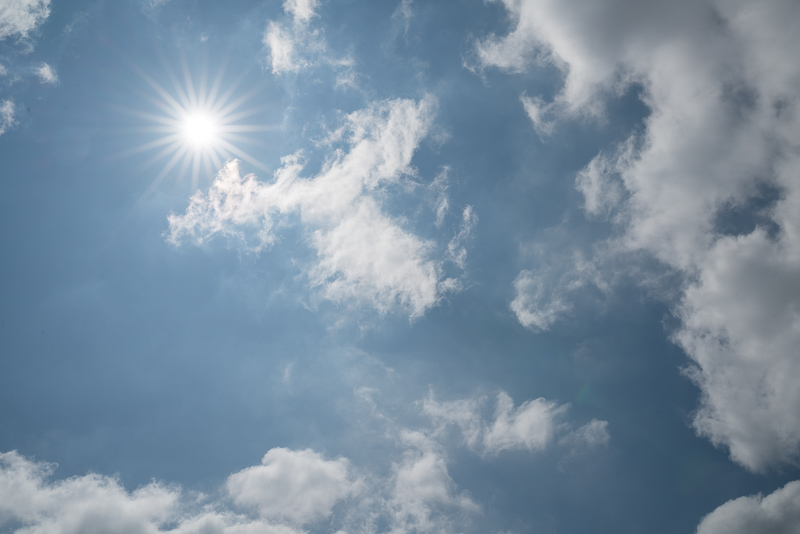
Sunstar rendering has never been a high priority for Sigma and it seems this hasn’t really changed with this new line. Sunstars look best at f/11 to f/16 but still the rays have varying length and distance to each other. Not something that worries me in a lens designed mainly for taking portraits or astrophotography though.
If you want to know more about sunstar rendering of different lenses have a look at this article.
Chromatic aberration
lateral
100% crops from border, A7rII
Even with all corrections in camera and in Lightroom deactivated there is still a profile for correcting lateral CA applied. So I took another shot without electronic contact between lens and camera.
Lateral CA can losslessly corrected in post, but in this case they are very low to begin with.
longitudinal
50% crops, A7rII
Near the minimum focus distance the Sigma 35mm 1.2 Art shows a bit of longitudinal chromatic aberration wide open which is mostly gone on stopping down to f/2.0 and almost completely gone on stopping down to f/2.8.
Longitudinal chromatic aberrations come in different forms. Unfortunately there are only few (if any at all) sources that give a clear differentiation. In the following comparsion to the Sigma 35mm 1.4 Art we will have a look at purple fringing (it shows up close to the plane in focus) and the “bokeh-CA” or “bokeh fringing” which you will see in the out of focus areas.
LoCA in the out of focus areas (“bokeh fringing”) are present and can be noticeable, but are still less obvious compared to the half a stop slower Sigma 35mm 1.4 Art.
Purple fringing on the other hand is corrected really well. This also shows in other scenarios, as can be seen below.
Overexposed highlights, e.g. on office windows hit by sunlight, are a real stress test and there is just a tiny patch of purple fringing visible:
Chrome highlights on vehicles are another situation where purple fringing can really ruin the party, but that is also not the case here:
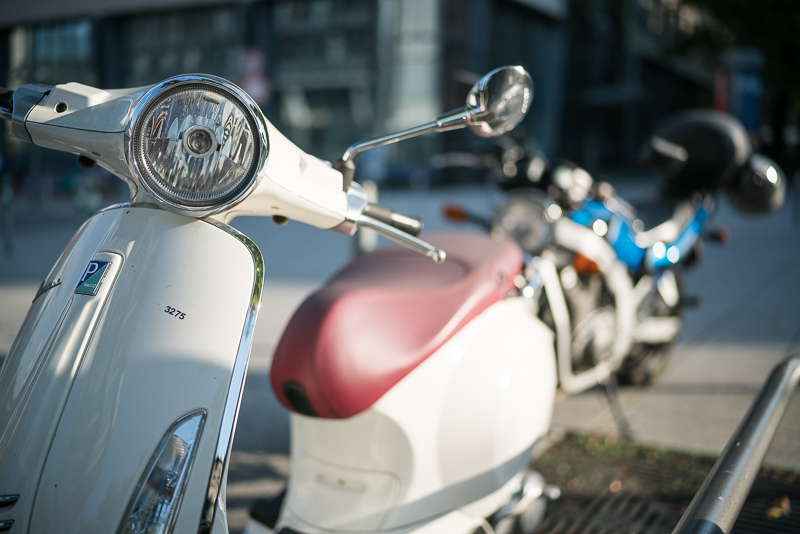
So despite being half a stop faster the performance is much better when it comes to purple fringing and slightly better in terms of bokeh fringing than that of the Sigma 35mm 1.4 Art and noticeably better compared to the Sony FE 35mm 1.4 ZA. Quite the achievement.
Alternatives
Auto focus
Sigma 35mm 1.4 Art:
If you are looking for a native 35mm lens with AF but feel the f/1.2 versions is too big, heavy and/or expensive this remains my recommendation.
buy from B&H | amazon.com | amazon.de | ebay.com | ebay.de for $770 (affiliate links)
Sigma 40mm 1.4 Art:
Even bigger and heavier. Correction of longitudinal CA is even better, but bokeh is a little less smooth. In terms of sharpness and contrast they are equally good.
buy from amzon.com | amazon.de | B&H | ebay.com | ebay.de for $1399/1150€ (affiliate links)
You can also have a look at my comparison of Sigma 35mm 1.2 Art, 35mm 1.4 Art and 40mm 1.4 Art to see how these lenses compare.
Sony FE 35mm 1.4 ZA:
Unfortunately this is nothing like Sony’s newer GM primes and furthermore plagued by severe sample variation. If you have a good sample it gets the job done, but I cannot recommend going down the rabbit hole of finding one of those golden copies.
buy from B&H | amazon.com | amazon.de | ebay.com | ebay.de for 1499$ (affiliate links)>
Samyang 35mm 1.4 AF:
This Samyang is the cheaper version of the Sony FE 35mm 1.4 ZA in many ways: similar size, similarly high CA, similar questions regarding sample variation. No button or aperture ring and according to some reports the manual focus experience is really bad with this lens.
This is your cheapest option when looking for a native 35mm f/1.4 lens with AF, personally I would pay slightly more to get the Sigma lens reviewed here.
buy from B&H | amazon.com | amazon.de for ~550$ (affiliate links)
Canon EF 35mm 1.4 L II USM:
This might have been the “best” 35mm f/1.4 lens with AF, but now I would rather recommend the Sigma 35mm 1.2 Art reviewed here, if you are looking for an AF lens.
buy from B&H | amazon.com | amazon.de for ~1649$ (affiliate links)
Sony FE 35mm 1.8:
A reasonable lens that I don’t know much about yet. From what I know so far maybe a bit pricey for what it is.
Sony RX1RII (Sonnar 35mm 2.0):
For a long time this was the only option to get an AF 35mm f/2.0 in the Sony ecosystem. Reknown to have nice bokeh which in my opinion has now been surpassed by the Sigma 35mm 1.2 Art reviewed here. The whole camera is less than half the weight of the Sigma lens, but also one and a half stops slower.
buy from B&H | amazon.com | ebay.com | ebay.de for 3299$ (new) or 1999$ (used) (affiliate links)
Manual focus
Voigtlander 40mm 1.2 Nokton E:
One of the few other E-mount primes with a maximum aperture of f/1.2. What are the differences compared to the Sigma reviewed here? No AF, lower corner sharpness, less smooth bokeh rendering, slightly more vignetting, more pronounced onion ring bokeh, better flare resistance, only 420g heavy and much smaller size.
Furthermore this Voigtländer is optimized for portrait distance and is a worse performer at minimum focus distance and infinity at wider apertures.
Many people like this lens though and it is certainly more fun to carry around.
buy from B&H | amazon.com | ebay.com | ebay.de for ~1099$ (affiliate links)
Zeiss ZM 35mm 1.4 T* Distagon:
This lens is noticeably smaller, offers very high contrast too but struggles a bit on Sony cameras due to the thicker filter stack.
buy from B&H| amazon.com | amazon.de | ebay.com | ebay.de for ~1999$ (affiliate links)
Voigtlander VM 35mm 1.7 Ultron:
This is still my 35mm lens of choice and there is a reason for that: it is one of the best balanced lenses money can buy. It really needs a 5m PCX filter to shine on Sony cameras, but going through that trouble is totally worth it. Still my allround choice for travel, landscape, architecture and blue hour photography.
buy from B&H | amazon.com | ebay.com | ebay.de for ~ 809$ (affiliate links)
A comparably simple design that cannot be compared to the lens reviewed here.
If you are looking for a cheaper manual fast wide angle lens may rather have a look at the 7Artisans 28mm 1.4 FE+.
buy from amazon.com | B&H | ebay.com | ebay.de (affiliate links) for $349
7artisans 28mm 1.4 FE+:
Now this lens follows a very different design philosophy. The Sigma 35mm 1.2 Art is an “as good as technically possible” lens, the 7Artisans is an “as good as possible considering the small size and reasonable price” lens.
Very different lenses for different tasks, both good performers and likable in their own way.
buy from B&H | amazon.com | amazon.de | ebay.com | ebay.de for ~$499 (affiliate links)
Conclusion
good
|
average
|
not good
|
A few points in the table above are debatable, so let’s talk about those first: Correction of longitudinal CA is not perfect (like e.g. the Voigtländer Apo Lanthar lenses) but the Sigma 35mm 1.2 Art performs better at f/1.2 than most f/1.4 lenses at f/1.4, which warrants a favorable assessment in my opinion. Same is true for coma correction. Distortion is a bit on the high side for a 35mm lens, but easily corrected in post, so no big deal.
The bokeh is the best I have seen in a 35mm lens yet. The rendering is similar to that of the Voigtländer 50mm 1.2 E and (to a slightly lesser degree) the Sony FE 85mm 1.4 GM. Meaning out of focus areas show a soft glow (spherical aberration) at wide apertures which leads to undistracting, soft backgrounds. Considering the dimensions of the lens I was just hoping to see a little less optical vignetting (same is also true for the Canon RF 50mm 1.2L btw).
Sharpness is really good from f/1.2, especially at portrait distance and everywhere in the frame. Same is true for contrast. Many f/1.2 lenses show really soft corners or subdued contrast at maximum aperture, but not this one.
This high sharpness and contrast in the focal plane combined with the soft bokeh leads to a very nice subject separation at f/1.2 under the right shooting circumstances (some like to call this “3D pop”).
Despite all the nice things I said in the paragraphs before, due to size and weight this remains a special purpose lens. I see its main purpose in wedding and portrait photography, where these things are less of an issue (at least to me) and the nicer subject separation can indeed make a difference.
Most of the former Sigma Art lenses had amazing sharpness, but in my opinion they were also often a bit lacking when it comes to bokeh/rendering. This is not the case here and the lens finds a balance between high sharpness, contrast and smooth bokeh only rarely achieved. This lens is closer to Sony’s GM approach than the other Art lenses.
We are dealing with an outstanding lens here, in terms of performance and also in terms of size and weight.
Update 12/19: when I wrote this review back in July 2019 I wasn’t sure how often the Sigma 35mm 1.2 will find its way into my camera bag due to its dimensions and weight. But the truth is, whenever I go somewhere where there is the possibility I will be shooting environmental portraits or street photography it is always the first lens I pick. For weddings there is also no discussion that this Sigma 35mm 1.2 Art and the Sony FE 85mm 1.4 GM are my two main lenses. As you can see I carried it through the streets of New York, Japan, the Balkans and many other places. I never regret bringing it, a lens that simply works and always gives me the results I am looking for.
you can buy this lens from amazon.com | B&H | ebay.com | ebay.de for about $1499/1529€
Sample Images
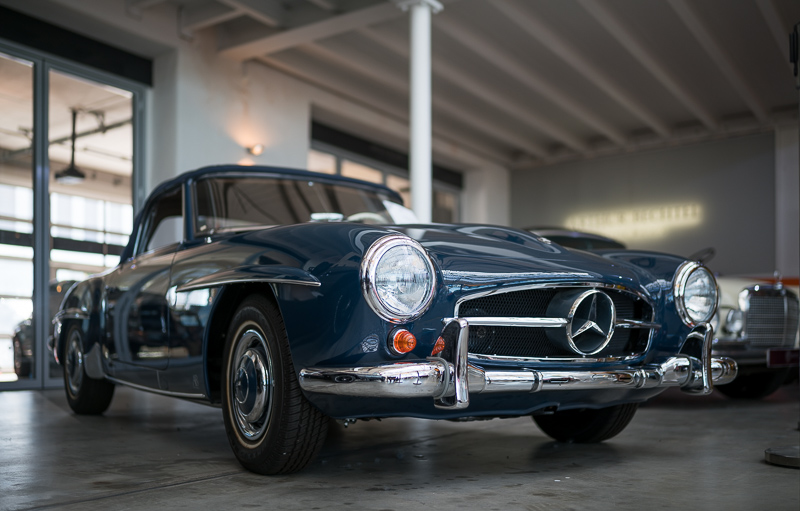
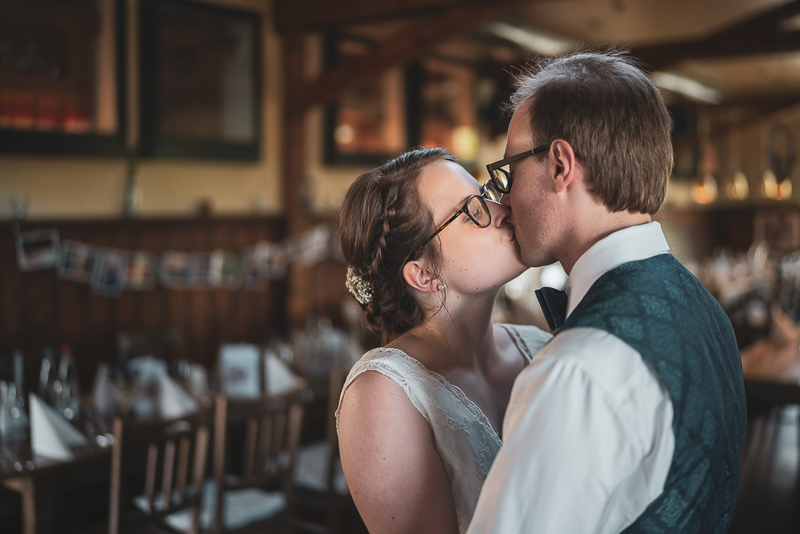
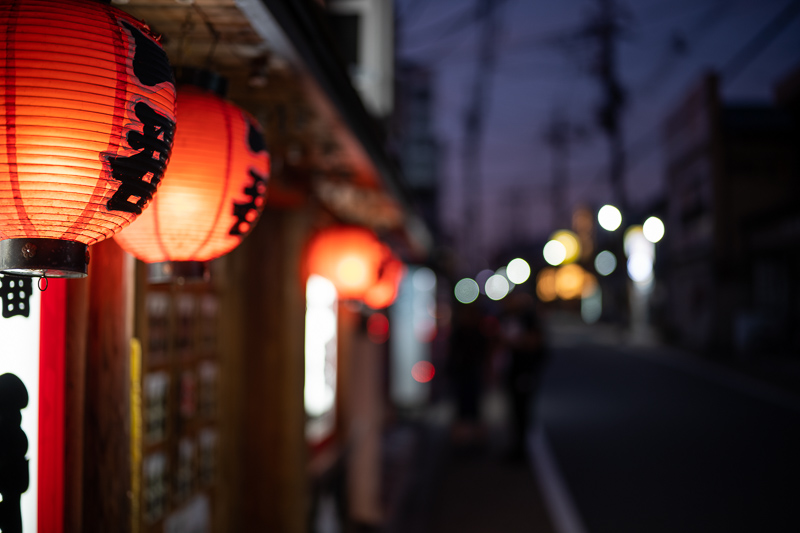
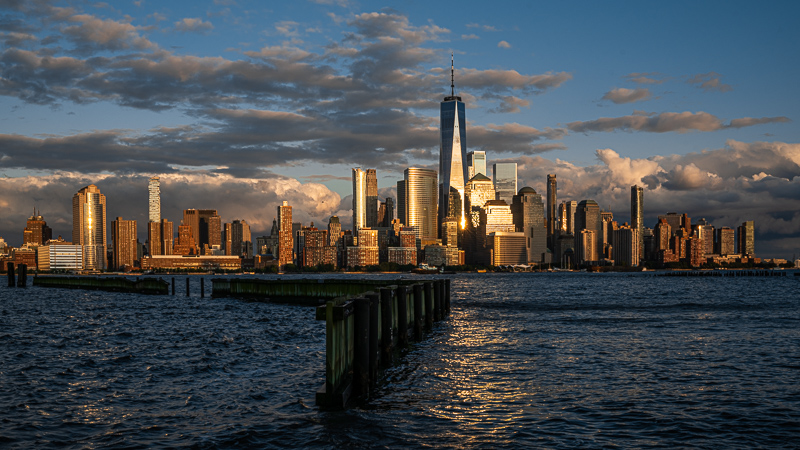
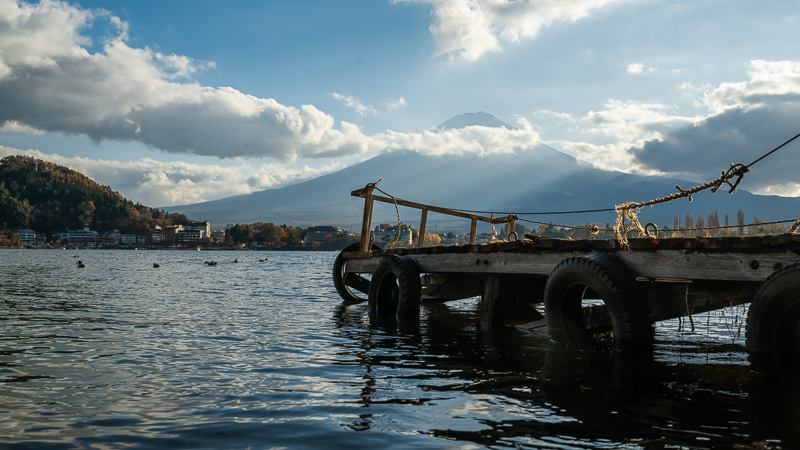
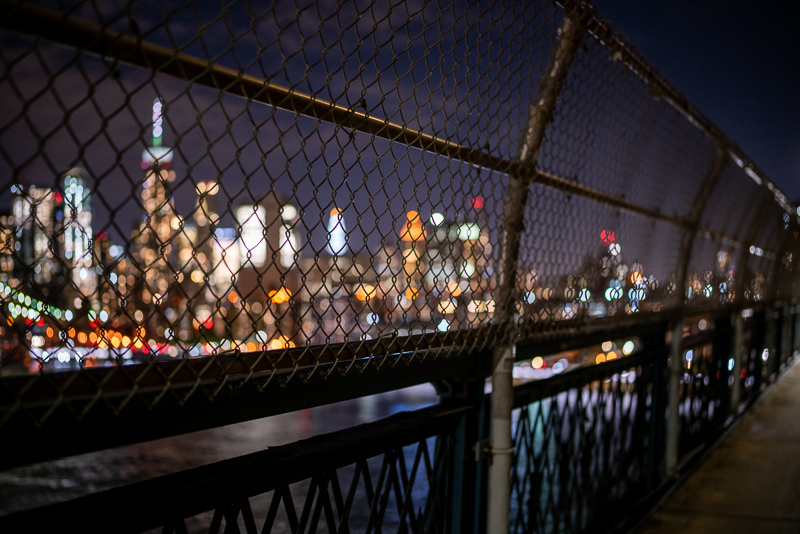
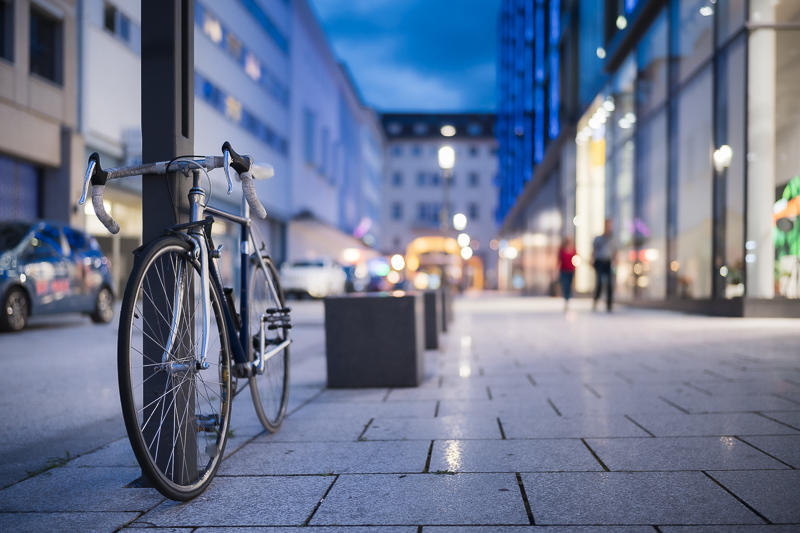
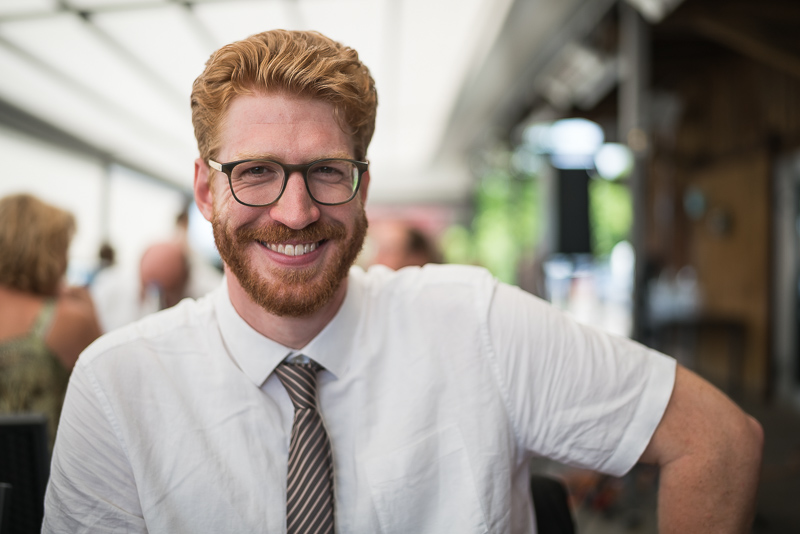

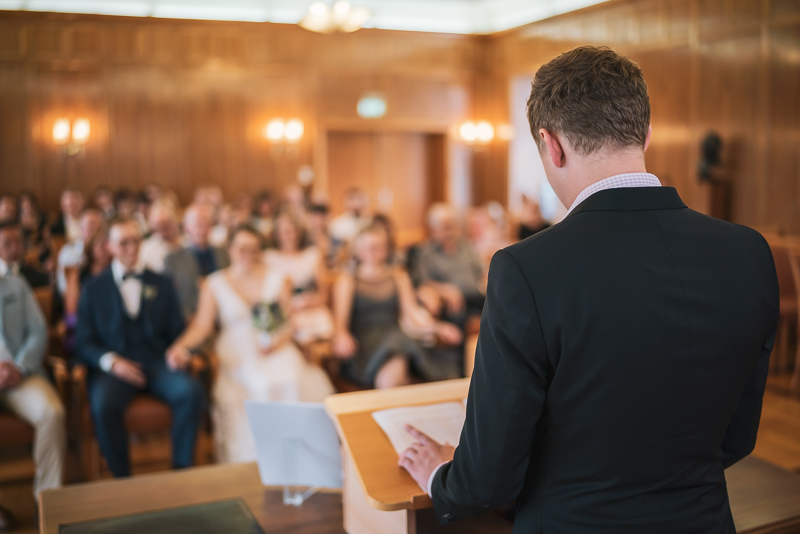
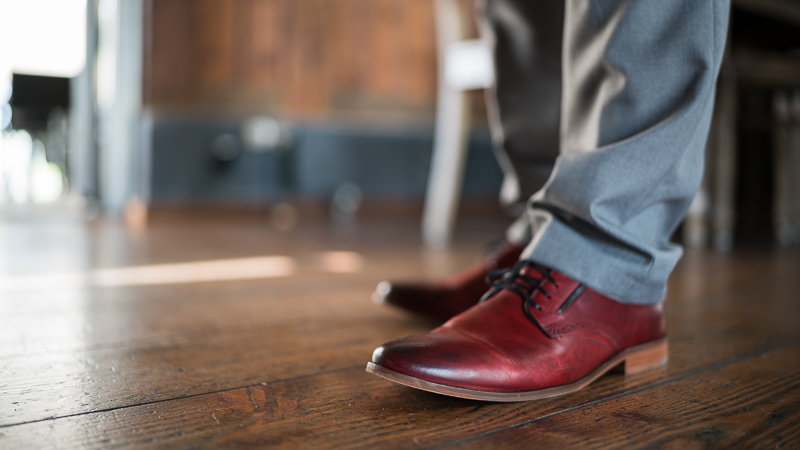
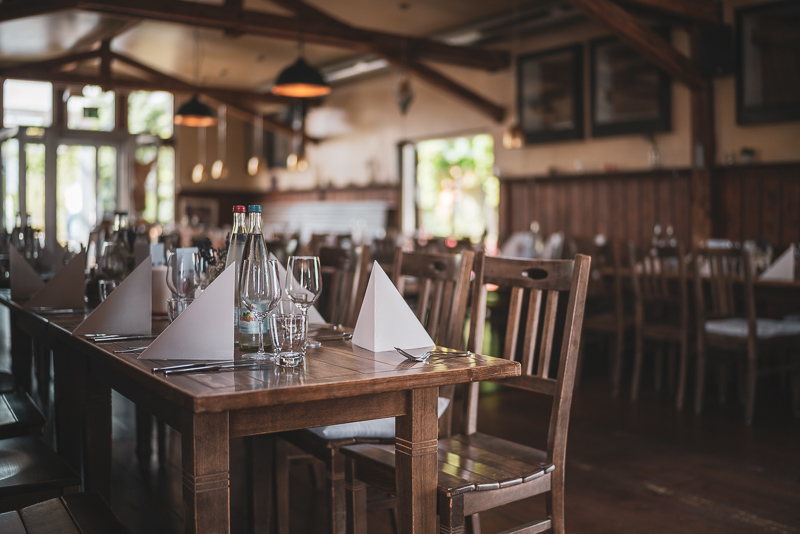
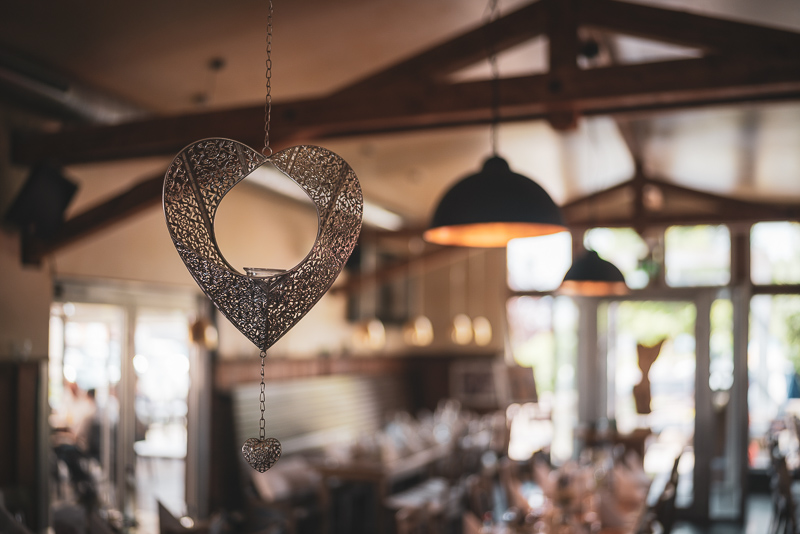
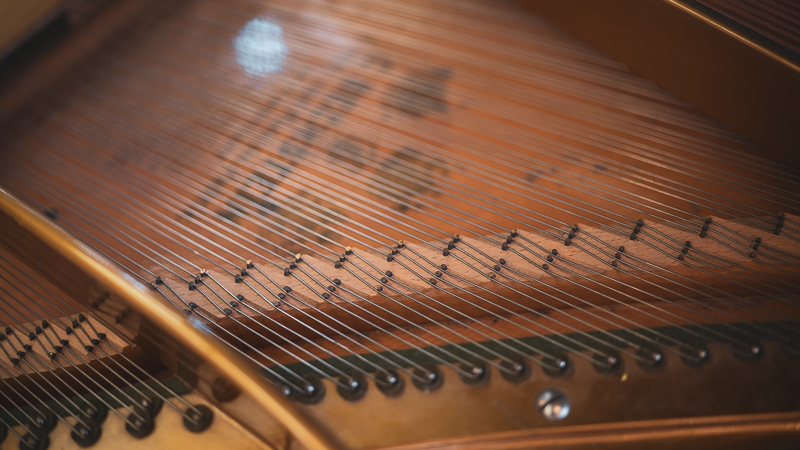
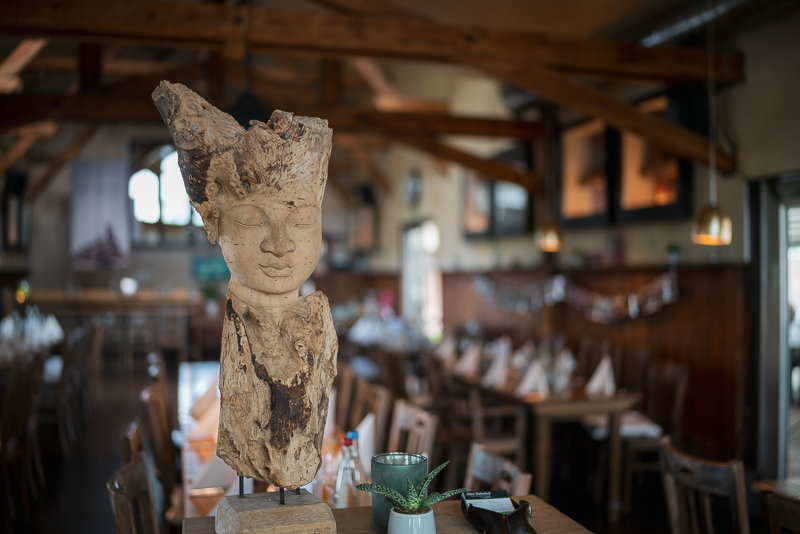
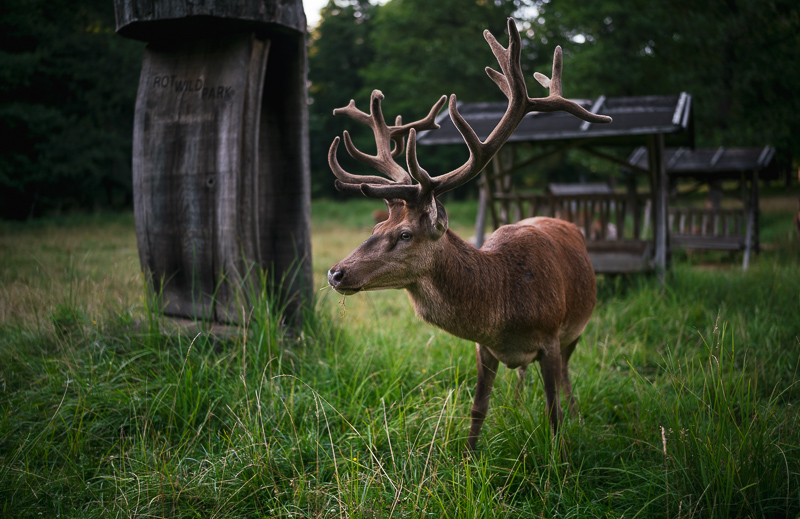
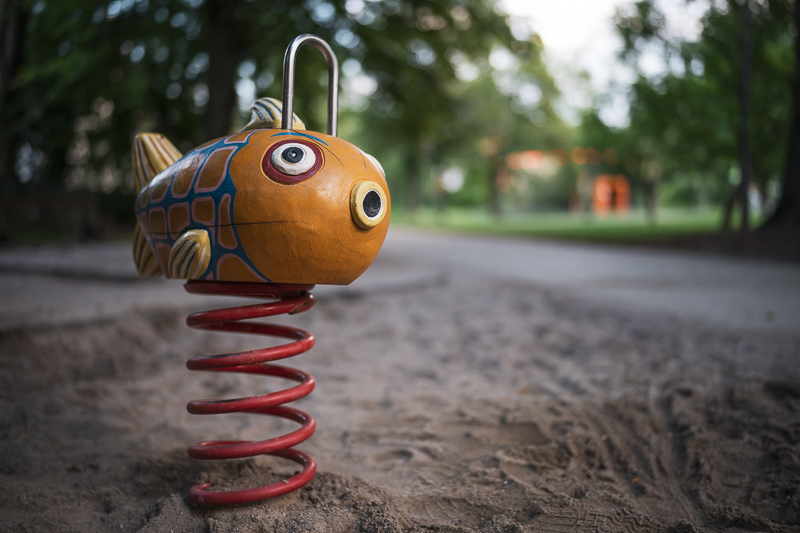
Most of the sample images in this review can be found in full resolution here.
Further Reading
- Sony FE lenses: Our comprehensive and independent guide
- Sony FE lenses: Our guide to portrait lenses from 85 to 135mm
- Review: Sony FE 85mm 1.4 GM
- Review: Voigtländer 50mm 1.2 Nokton E
Support Us
Did you find this article useful or just liked reading it? Treat us to a coffee!
![]()
![]()
![]() via Paypal
via Paypal
This site contains affiliate links. If you make a purchase using any of the links marked as affiliate links, I may receive a small commission at no additional cost to you. This helps support the creation of future content.
Latest posts by BastianK (see all)
- Review: Canon EF 50mm 1.0 L USM – Still the world’s fastest AF lens - December 30, 2025
- Review: Nikon Nikkor 105mm 1.8 Ai-s - December 28, 2025
- 2025 – Year in Review - December 23, 2025







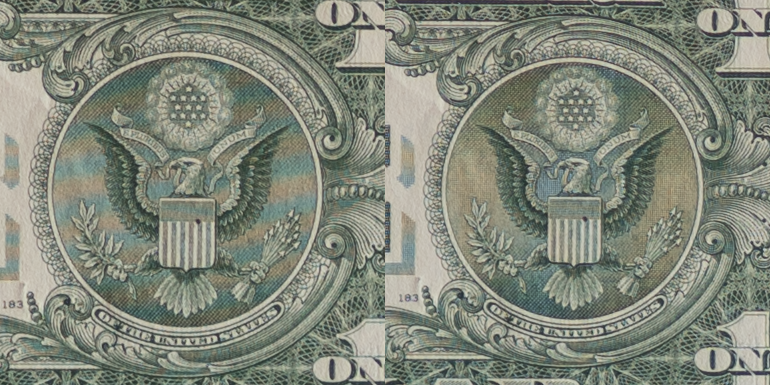








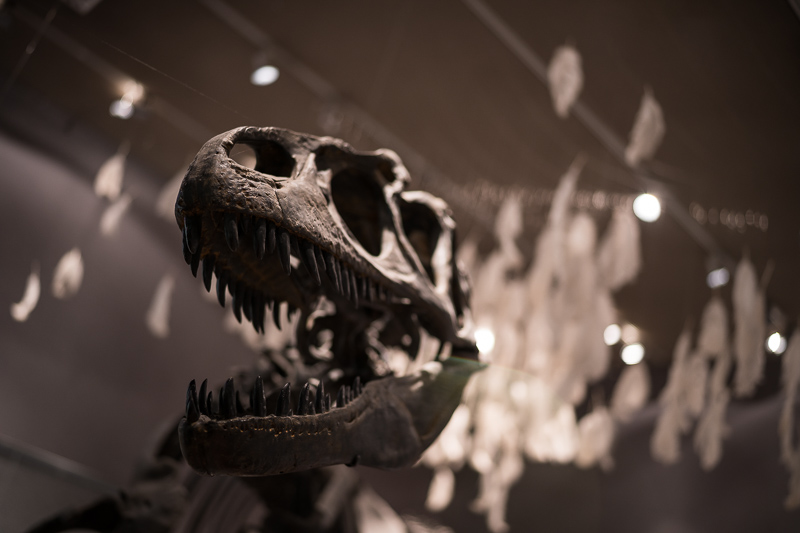
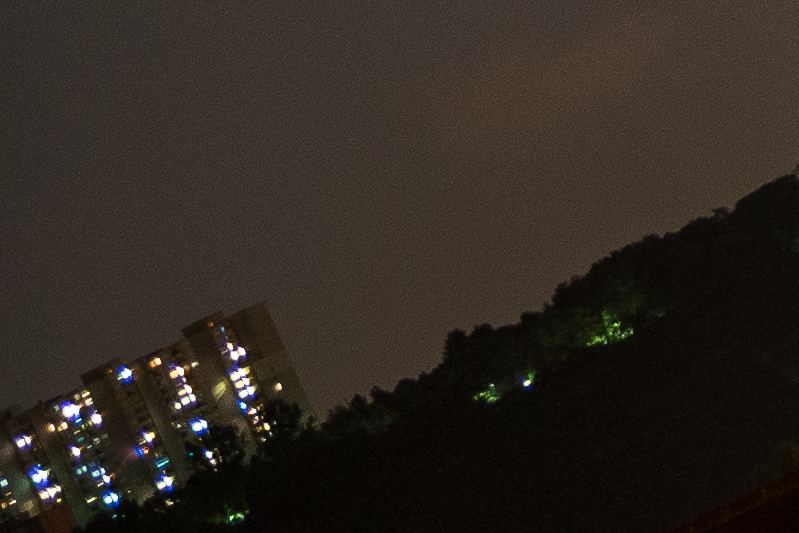
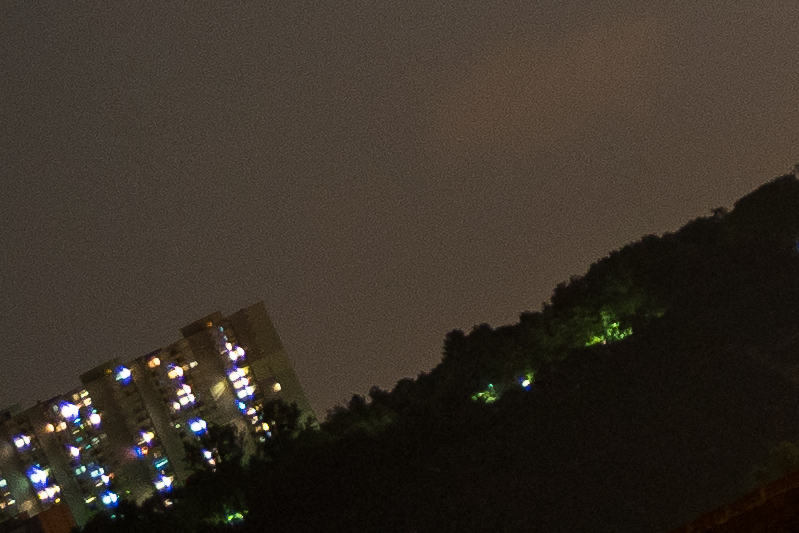
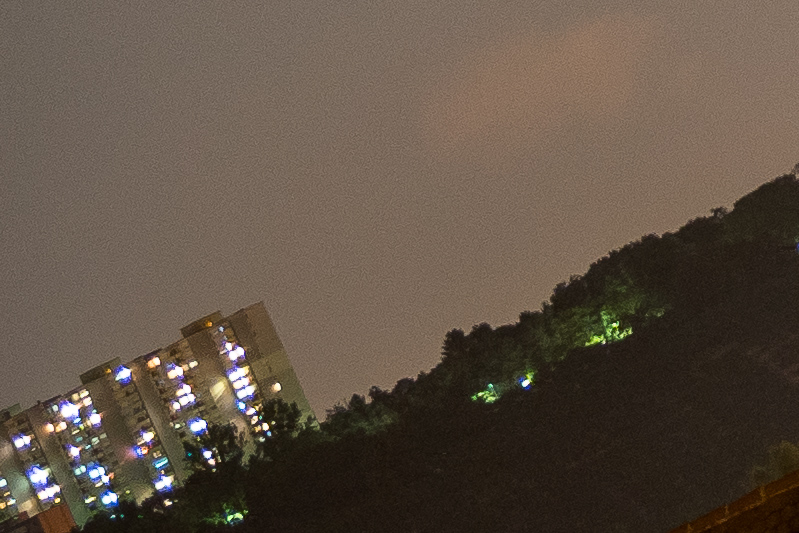
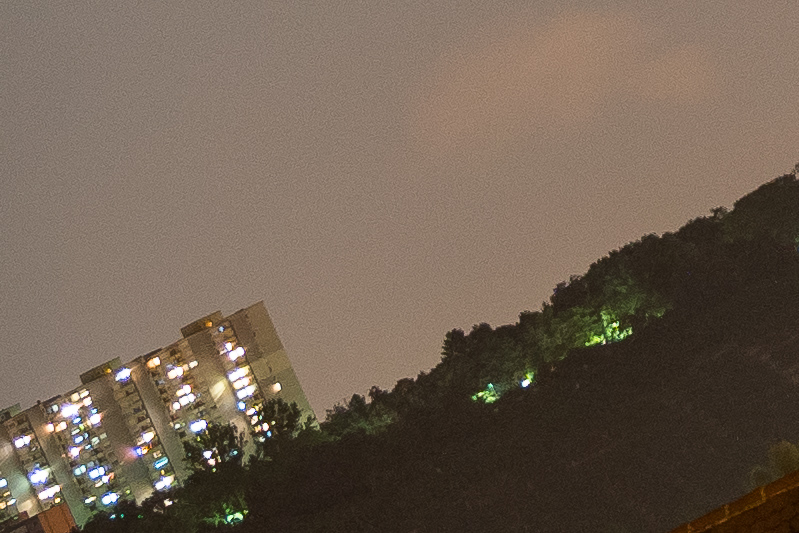
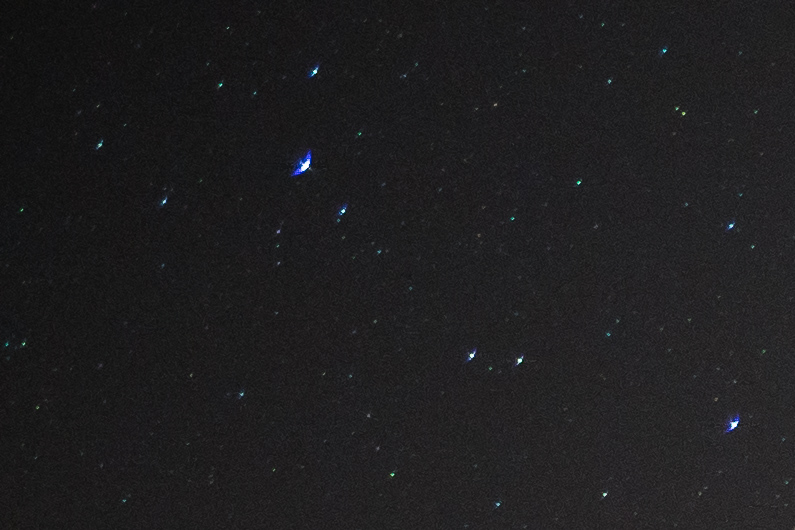
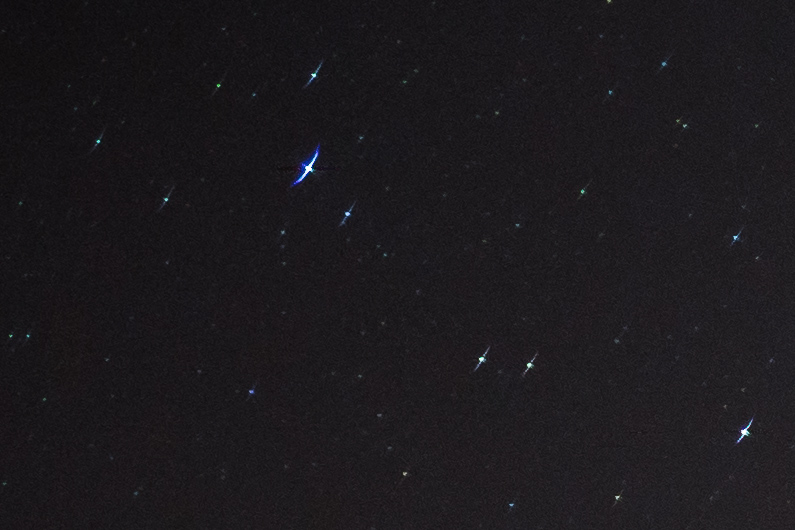
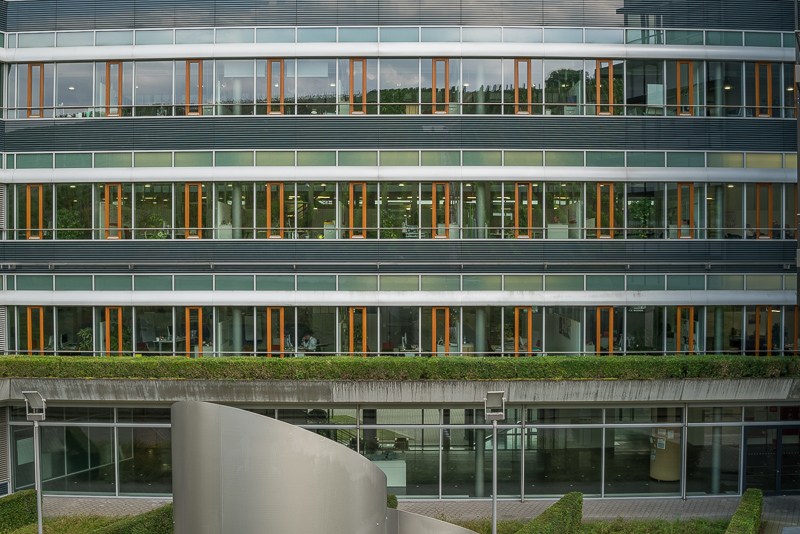
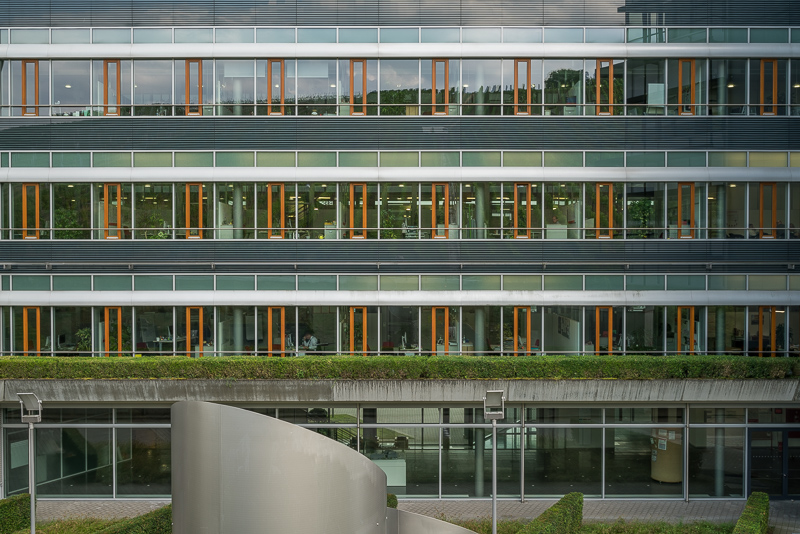
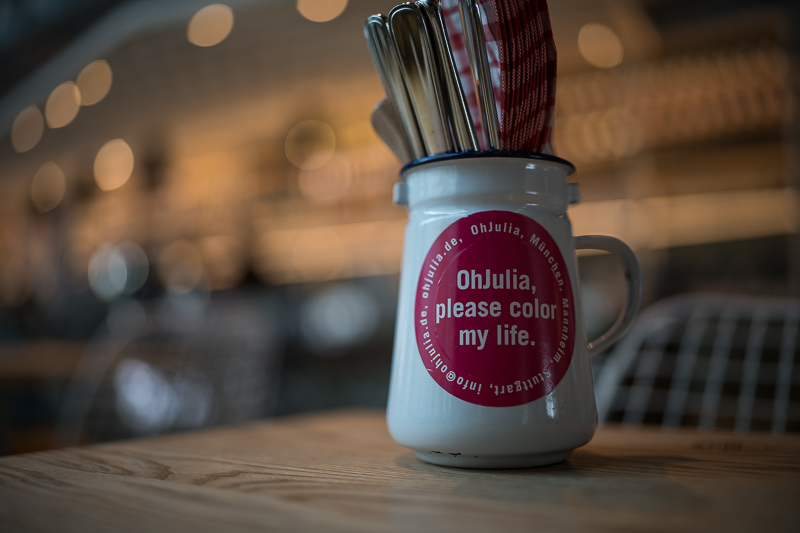
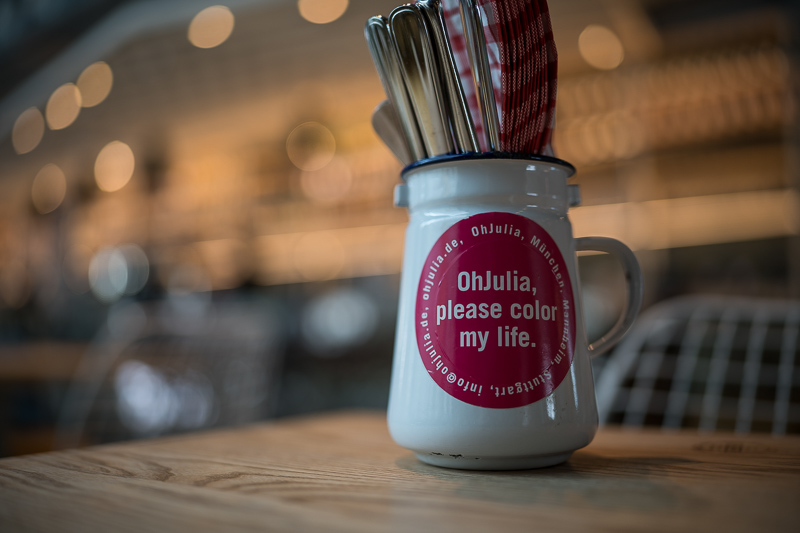
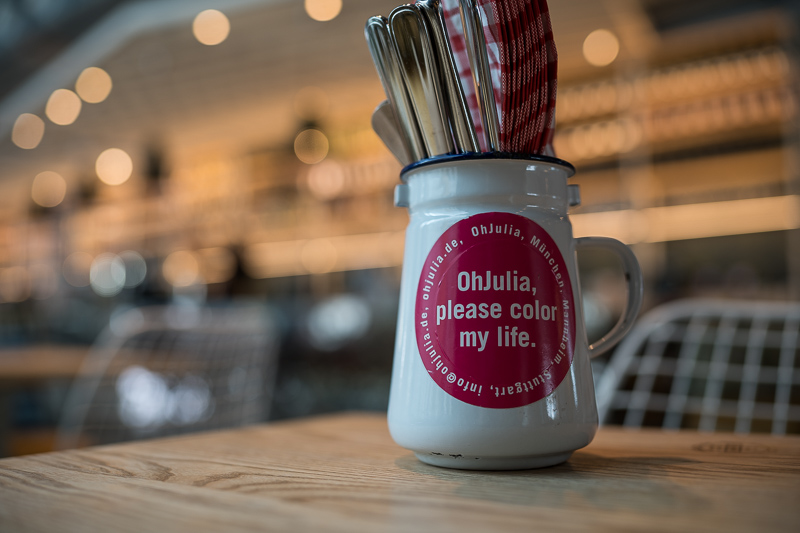
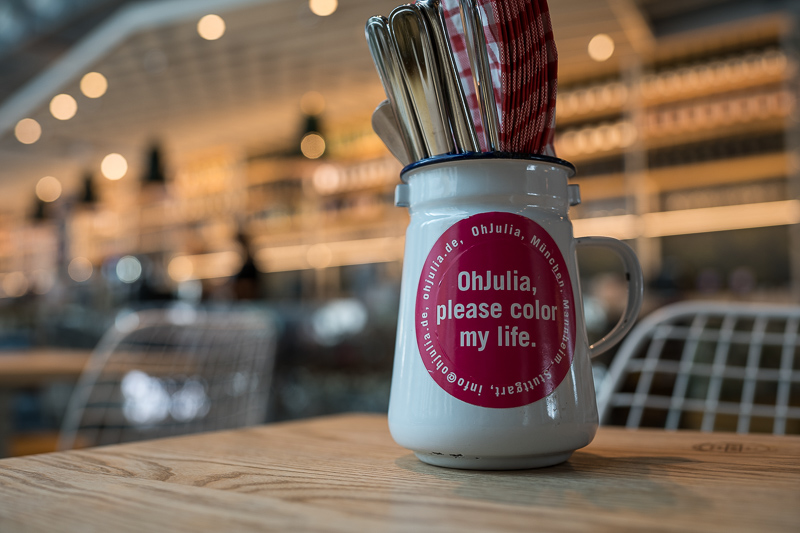
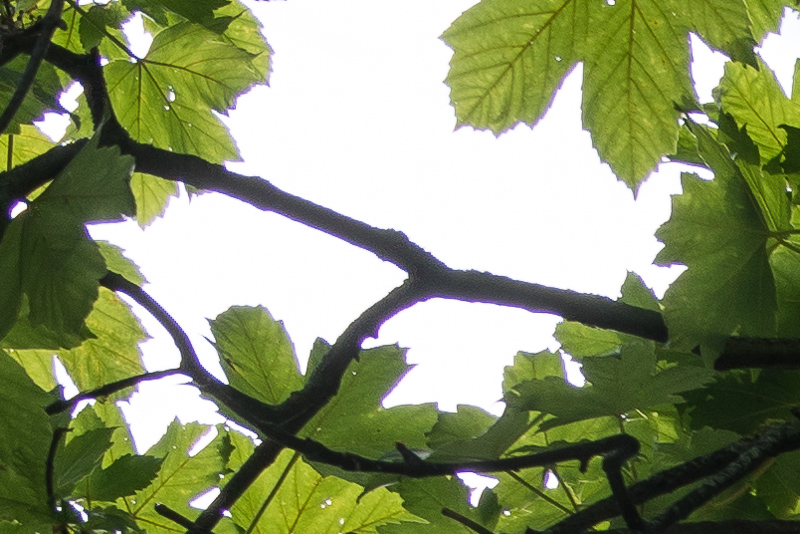
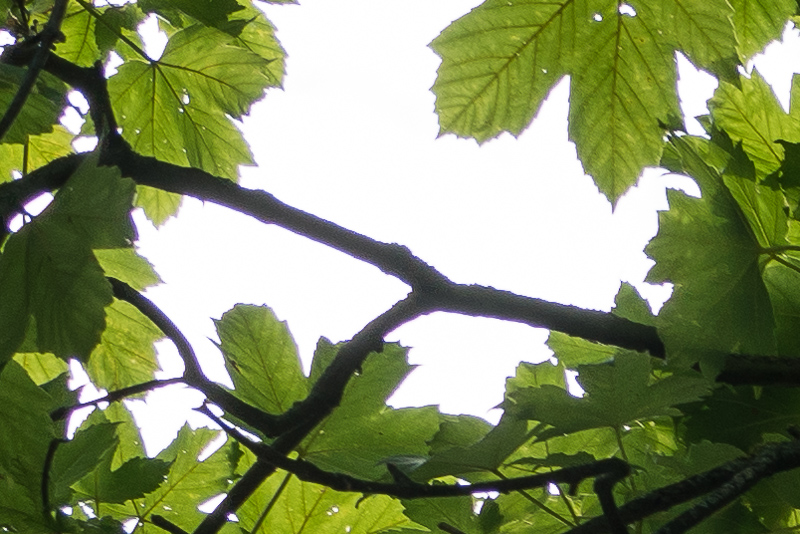
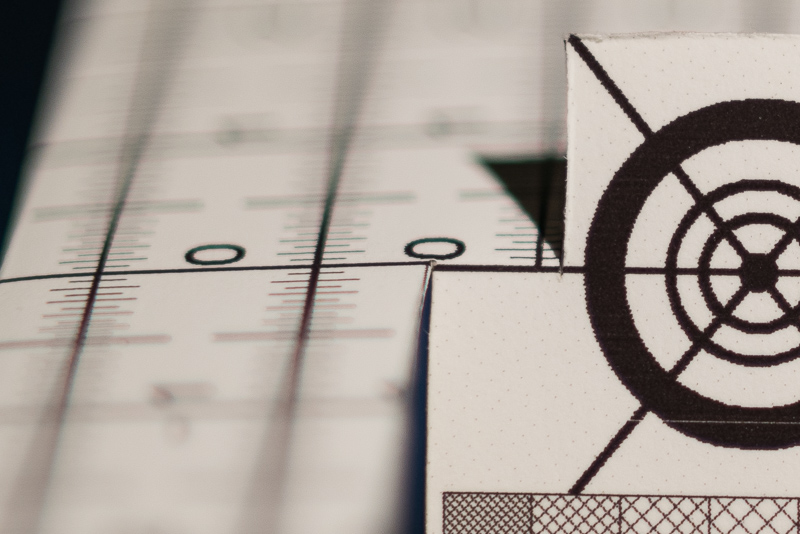
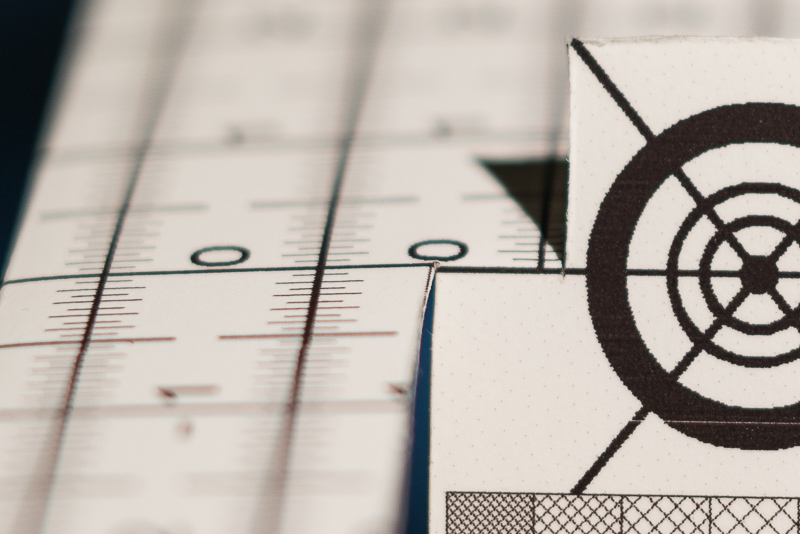
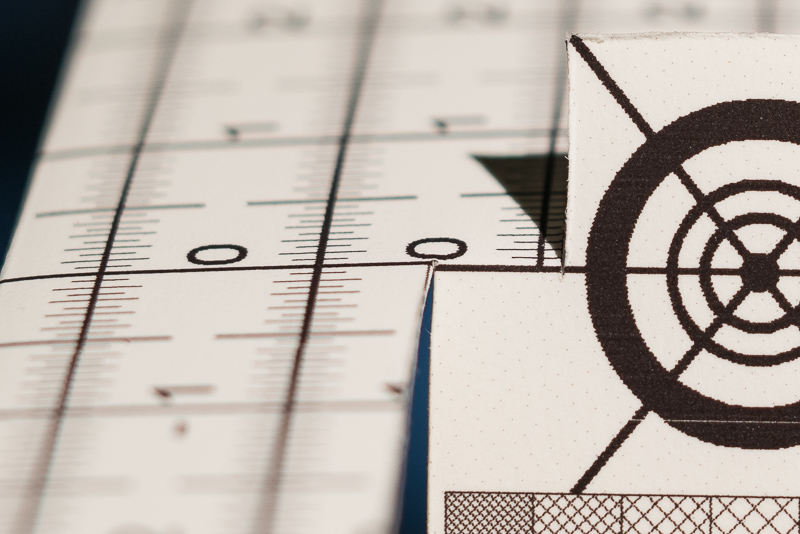
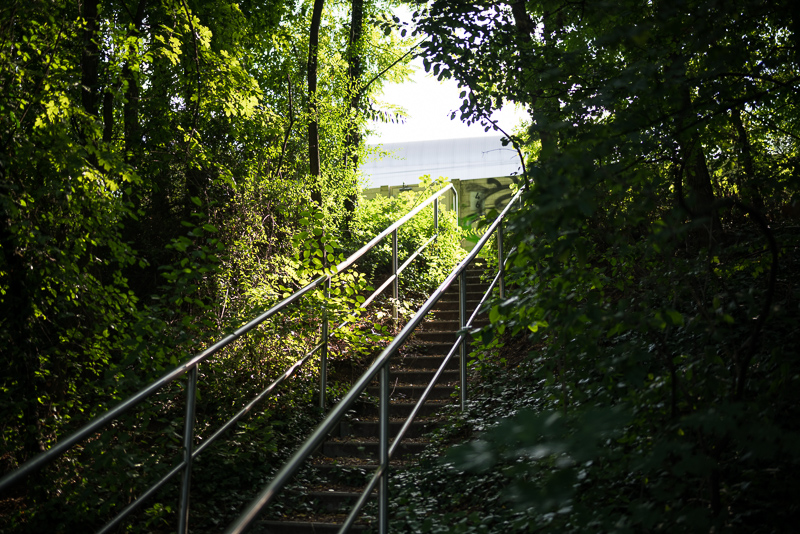
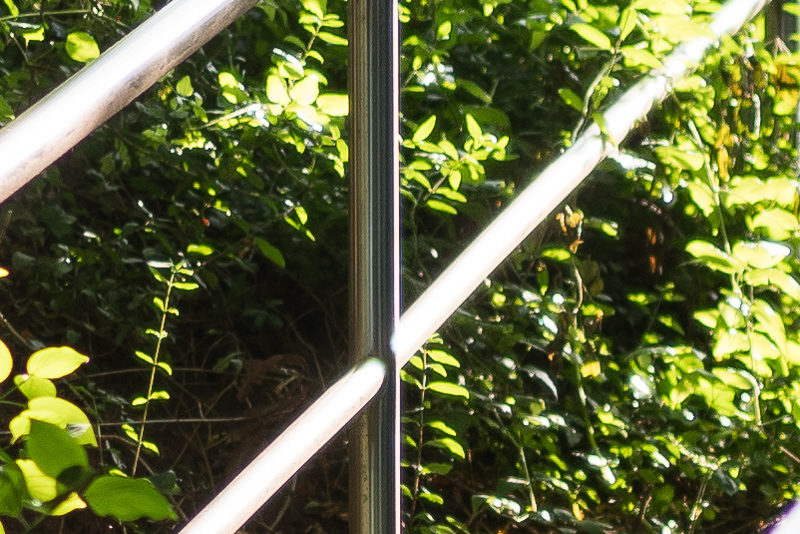
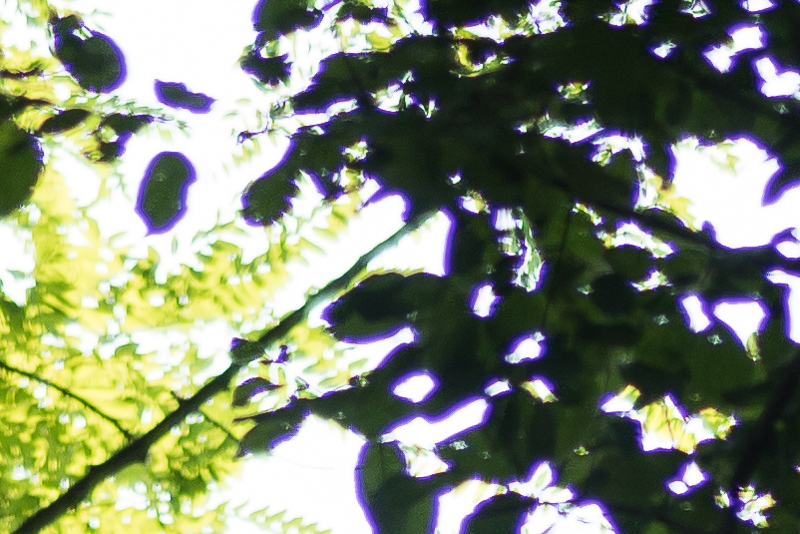
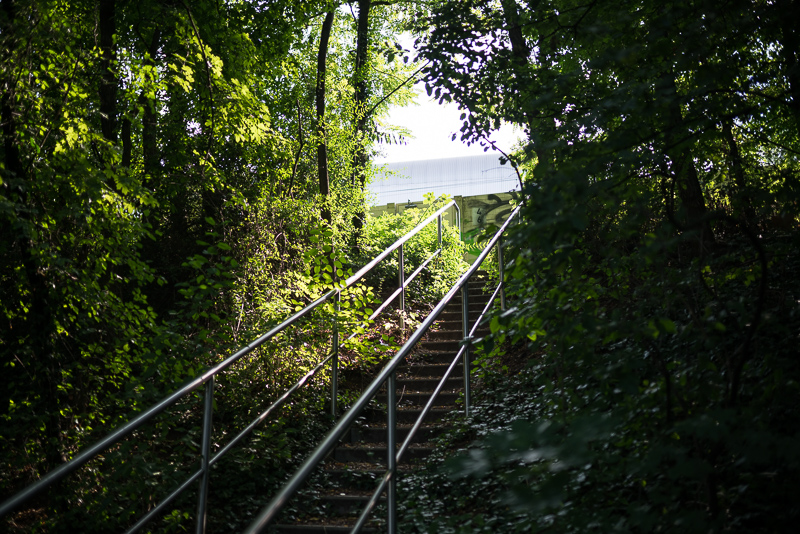
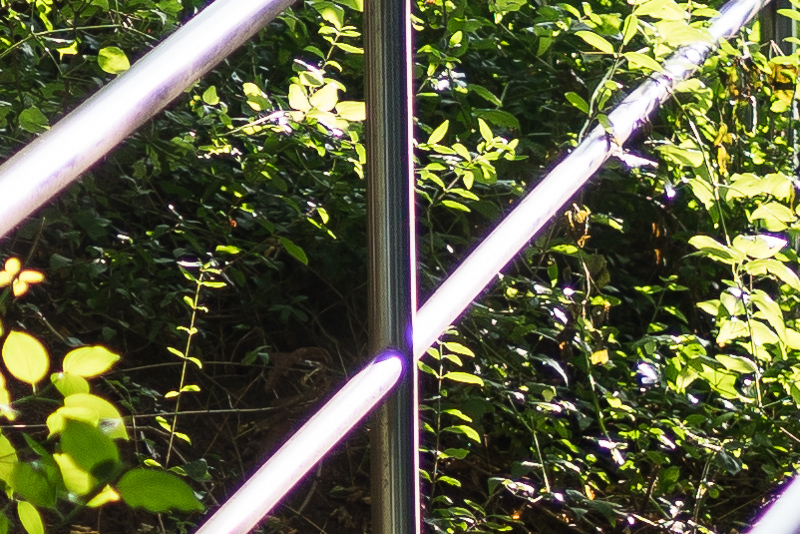
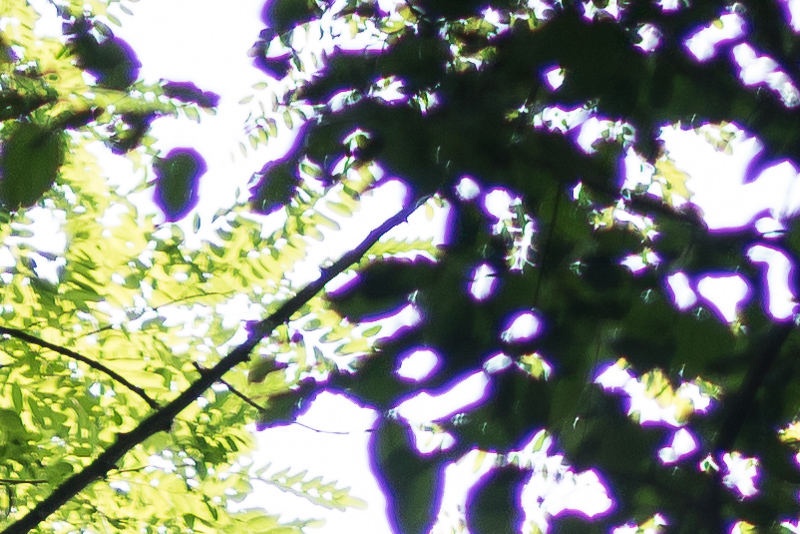
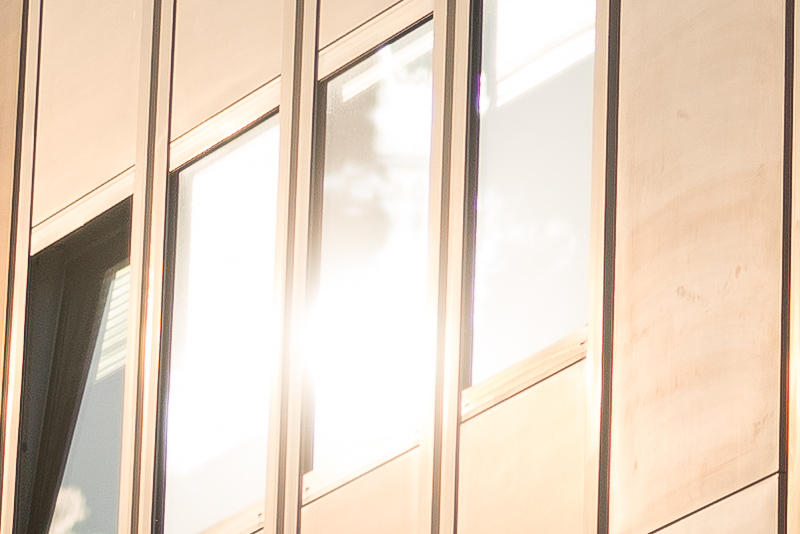

Love your work. Apprecite the quick wrote up 🙂
You display really great productivity in this summer! Thanks for good work and keep it coming!
It is a busy period with interesting new releases at the moment and the 7Artisans 75mm f/1.25 is just around the corner.
It was a coincidence that I reviewed the Tamron 17-28mm 2.8 though, Jannik was destined to do it but (un)fortunately on vacation when it became available, so I jumped in.
Would be interested to see you work with the new Tamron SP 35mm f/1.4. I suspect it would surprise.
Although we often review legacy DSLR lenses, as these are often cheap, and we all have an interest in legacy lenses, we are not likely to very often review new DSLR lenses like the new Tamron. This will be so even when they are very good, as it doesn’t make sense to us to pay top dollar for a current lens which will still require adapting, with all the costs and compromises that entails. The main exceptions will be when there absolutely is nothing equivalent available natively, as with tilt shift lenses and certain superteles.
Great review as always. Honestly, I didn’t even wanted to buy Sigma 35 1.4 before I saw review on this site to be sure what I’m getting (even though this lens was reviewed literally by everyone) 🙂 How do you find focusing it in manual in terms of responsiveness? It doesn’t have hard stops I asume? Do you think it would work well with follow focus systems for video?
We have to differentiate between the 35mm 1.4 Art and the 35mm 1.2 Art.
The 35mm 1.4 might work with follow focus, as there is a mechanical coupling between helicoid and focus ring. Yet the throw is rather short.
The 35mm 1.2 is a focus by wire design and despite the very long focus throw I doubt it will work all too well. When you turn off the camera
and turn it back on it will always go back to infinity, so the focus setting will jump relative to the focus ring.
Keep in mind I am not a video guy, so probably the wrong person to answer that question.
Looks like a crazy good lens!
That size, weight and price :/ I think for most of us it is a lens that overlaps the practicality line.
The results look great indeed, the 35mm was always an interesting and special lens, now it is 1,2f and it has that extra dreamy rendering to it, works very good in weddings, like each picture is worth to be printed in a book because it looks perfect right out of the camera.
Also this is the first ever 35mm 1,2f with autofocus available in this regard Sigma is actually chasing Canon, which still after so any years is the only company offering 50mm and 85mm 1,2f lenses with AF.
Perfect lens for me so dont say “most of us” because that is just based on your own neeeds
But dont you think that having a 1 kilo beast with this size only for 1,2f is a little to much?
I cannot imagine a situation where I would ever want such a large prime.
I’d much rather have a 1.8 35mm than this monster. Its almost as heavy as my old Nikon 80-200 2.8!
I agree with the column you wrote earlier about wanting more small and less perfect/less fast lenses and fewer bricks.
Your question might not directed at me but I would like to give you my 2 cents.
I agree with you, as a travel lens it doesn’t make any sense when you will be able to get the Sony 35 1.8 at only 300 grams ?
Suppose the t-stop of the 1.2 is 1.5-1.6 and the t-stop of the Sony 35 1.8 could well be 1.8.. then you also don’t loose more than 1/3th of a stop !
I would say : only buy this lens because you want the only 35 1.2 lens that’s in existence. Otherwise wait for the Sony 35 1.8. I will be getting that as well just because of the weight.
I really wonder how you come to your T-stop conclusion.
Can you base it on some actual sources?
my two cents…the new Sony 35 f1.8 is damn near perfect except for the thing I desire the most…nice bokeh. Just don’t think I can live with its bokeh.
You don’t buy this lens only for f1.2. You buy it because it is by far the best 35 mm lens available for Sony and probably for any system.
I got my copy the other day. I have previously owned the Sony 35 1.4 and several other 35 mm lenses for different systems. They are not even close. The Sigma is sharper across the frame at f1.2 than most other 35 mm lenses are stopped down, let alone wide open. On top of that, you get fast focus, beautiful bokeh, and great low light performance.
If you want to bring your 35 mm with you everywhere you go, this might not be the right lens for you, but neither would the 35 f1.4 options which are also big and heavy lenses. I will use my lovely little Samyang 45 1.8 for traveling, but I will never shoot another event without the Sigma 35 f1.2. It is a stunning lens that gives your photos a very special quality. Perfect for weddings, concerts, parties and not least portraits.
The difference between F 1.2 and F 1.4 is negligable.
I used to have the sigma 35 1.4 for Nikon. Then made the switch to Sony and since a few days have the 1.2. It is sharper and maybe the rendering is better but the weight!! Also very high vignetting.
Question to the reviewer : do you know the T-stop of this lens ??
I don’t know how I should properly measure it.
Apart from comparing it to other lenses which in my opinion is inherently pointless.
Dxomark is the only resource I am aware of that lists t-stop info..
Mostly they list 1.8 t-stop for f 1.8 lenses and I haven’t seen a 1.2 lens on their site with a 1.2 t-stop.. mostly f1.4 lenses are listed with t-stop between 1.6 and even 1.8..
Also for the sigma 1.2 lens the vignetting is crazy high.. So in reality wide open you only get that light gathering ability center center frame.. So I agree with the reviewer that you need to get this lens for the ‘better’ rendering and Sharpness increase over the sigma 35 1.4, although I didn’t find that lens lacking in sharpness.
For most people this lens is either too heavy and thus not practical enough or it doesn’t offer much extra over the sigma 35 1.4 which is half the price!
But without question this is the best native FE mount 35mm lens.
Lastly : it would be interesting to be able
to do a blind test between the sigma 1.4 and 1.2.. is this possible ?
Hi Bastian! I’m glad to hear about this new lens. What’s your opinion how it compare to voigtlander nokton 35mm f1.2? The latter is much lighter than the huge sigma.
I have only very little experience with that Voigtlander lens.
As it is an M-mount lens it will suffer badly on the Sony cameras in terms of corner sharpness, which is why I was never really interested in using it.
I was always hoping for an E-mount 35mm 1.2 by Voigtlander, but so far we only got a 40mm 1.2 instead.
It’s actually one of the better m lenses in this regard 😉
That claim I hear often, but prove I have never seen.
In your review you mentioned the 35mm 1.2 was one of your main two lenses at this wedding. What was the other one you were using?
That was the Sony FE 85mm 1.4 GM.
For some additional shots I was also using the Canon EF 200mm 2.0 L IS.
Locations were mostly tight though, so not many opportunities to use the latter, unfortunately.
Hi! How was the autofocus during the wedding shoot? I know Sigma lenses are notorious for focus hunting especially in low light, I would find it hard to see it as reliable when needing to get those crucial shots.
I cannot tell you more than I have already written.
I have had zero issues, but it seems I am not very demanding, especially when it comes to 35mm lenses.
I also shot several weddings with manual focus 35mm lenses and had no issues whatsoever.
Hello!
Would you consider this lens for multi shot panorama astrophotography? Or Would you rather take the 35 mm 1.4 than one?
Kind regards
Vignetting is pretty much the same at shared apertures.
Coma is supposed to be better on the f/1.2 version, but I still have to check that, will tell you after I did.
great thank you! I really hope it performs well, im saving for 35 mm 1.4 atm, but will buy the 1.2 if it performs better.
I surely have a 35mm 1.4 Art to sell after that comparison 🙂
Ach ich sehe gerade, wir können glaube ich auf deutsch schreiben^^
Wie kann ich mit dir in Kontakt treten, bzw wo werd ich es sehen können? 😉 Falls du es vorhaben solltest zu verkaufen, gut behandelte gebrauchte 35mm 1.4 findet man nicht so oft <3
Das ist mittlerweile schon weg, sorry ?
Based on your pictures, I’m really enjoying the rendering of this lens so far. Better than my 1.4 Art version which I find a bit flat (sharp but boring). Hopefully Sigma will lauch a Nikon Z mount version soon. Thanks for the review!
Great first look Bastian, nicely done. How do you think she stacks up to the Sony Zeiss 35mm 1.4? Considering trading mine in for the 1.2.
Sell the Sony FE 35mm 1.4 ZA before the value drops even more would be my advice.
Good suggestion considering it really is a heavily flawed lens with lack of sharpness away from the center wide open, bad onion rings, poor CA and LoCA.
Damn you!! I sold my FE 35 1.4 (which I really loved because of its rendering) to get a Leica q (which is super small) … after your review I am so much turned on to buy this fat beast (I hate the weight already, but the rendering ….) … maaan 🙂 …. you surely not working for Sigma?! :p
Good call. I sold the Zeiss, the Sigma is contributing to my biceps as we speak…
Looking forward to great biceps as well ^^
Mine too.
Thank you so much! Very nice photos. Good review, looks promising. My tiny biceps are going to hate me.
Thank you very much for your nice review of the lens!
I have tried to compare the photos you got with ZM and Loxia 35
Both Lox and ZM look to have a more appealing colors.
Is this a false impression of mine?
Regards and thanks in advance
As light, editing and even cameras have been different I would not make such an assumption based on the reviews.
Yes completely FALSE impressions. Only way to compare would be under identical setups side by side.
Order placed, thank you! Definitely the quickest proceeding early review. Hope you also get the new 14-24 soon!
Ah that is very unlikely.
This 35mm 1.2 Art I bought, but I have little personal interest in the 14-24mm 2.8 so I will not do that there.
Just yesterday I contacted Sigma Germany. They said they are currently “busy” and it would take them til Oct/Nov to send us a review sample of any lens.
I hope I can make contact with Sigma UK or Japan directly to bypass our german distributor.
Hi,
Great review again.
I like this lens except one thing, the weight is too much.
Any change to review voigtlander 35mmf1.4 M mount version ii?
Definetly not, optical design is almost the same as Voigtlander 35mm 1.4 Nokton E Classic, but this M-mount version will have even worse corner performance (hard to imagine looking at the review, I know).
Thank you so much for your reply.
Just want to ask, have you got the electronic first curtain shutter switched off? At faster shutter speeds there is a definitive difference in the bokeh rendering. This lens performs much better with mechanical shutter at fast shutter speeds! I’ve just received my copy yesterday and LOVE it
I have EFCS turned off for all the shots you see here.
I might have to carry a wheely if I buy this lens.. I wish they brought this in manual focus keeping the weight and volume smaller as a result. – like the voigtlander f1.2 lenses
Hey Bastian,
hervorragender Ersteindruck und Kompliment generell an diese Seite hier. Ich verfolge die Reviews schon lange und bin ein Fan von euch, da ihr meiner Meinung nach die besten deutschsprachigen Reviews hervorbringt.
Auf einigen Bildern erkenne ich die Esslinger Weinberge… Ich wohne noch nicht allzu lang hier in Esslingen und wollte fragen, ob du/ihr Lust habt mal zusammen Fotos zu machen, sich auszutauschen oder wie auch immer 🙂
Ich würde mich freuen, kenn bislang hier noch wenig Leute und erst recht keine mit ähnlicher Fotoaffinität 🙂
Just thank you so much, great job
Thank you!
Holy smoke, 1020 gr. of weight, and 82mm filter size, and all this mounted on a tiny Sony A7xxx without battery grip! Sorry, NOT for ME!
Hey there, great review! I am between this and the outstandingly sharp 40mm Art. Do you think the 35 1.2 can match the 40 in sharpness? Perhaps you have the MTFs of them. Looking for a nice prime for lowlight street. Btw I dont mind the weight, think it feels great to „have something in hand“.
Best regards from Munich, Germany
I might get a Sigma 40mm 1.4 Art for a comparison next week.
From the mtf the 40mm 1.4 looks slightly better (and it better be, as it is bigger and half a stop slower!),
but I am very sure this 35mm 1.2 has noticeably nicer bokeh.
Would love to see a comparison of these two giants!! Great work btw, your site is a gem 🙂
Thank you so much for some nice image examples. Nice work really helps to demonstrate the quality of a lens. This is a big contribution to the community. I was looking at the new Nikon 85/1.8; Nikon should ask you to shoot their sample images.
Thank you for your nice feedback!
Nikon is free to contact me, I am not hard to find 🙂
Grande recensione !
Mi serve un 35mm per la mia A7RIII e sono molto indeciso tra
Sony ultima 35mm 1.8 e questa Sigma art
Potresti darmi un consiglio
Grazie
You have the choice between a very big and heavy lens with great optics and bokeh and a reasonably, well balanced (maybe) slower lens.
Cannot tell you which would work better for your needs.
Hi~
Thanks for the great work!
Do you think it is wise to trade my SONY 35 f/1.4 ZA lens for the new Sigma 35/1.2 ?
If you don’t mind size and weight of the Sigma: yes.
Well, i do mind, that the problem, LOL
I noticed that the “bokeh ball”size between f1.2 and f1.4 is almost the same, especially on the corners. The advantage of f1.2 over f1.4 is not as big as i expected. So what do you think?
You already have a whole review of what I think, what else do you need? 🙂
i mean, the advantage of 1.2 over 1.4.
That advantage is not that big.
And that is also not the reason why I would recommend this Sigma over the other 35mm 1.4 lenses for those who don’t mind the size/weight.
Thing is, that I found all the 35mm 1.4 lenses to severly lack in one area which made me stay away from them.
This one has no fatal flaw (except for size and weight).
thanks a lot, love your work.
The long focus throw is so good for video. I really like it!
Hello again, Bastian.
i received my copy yesterday, and compared to my 35f1.4ZA side by side, but kind of disappointed by the performance though, considering the extra 460 grams.
No doubt Sigma is sharper, but not that much. The CA of f1.2 is rather bad and very similar to the 35/1.4ZA and maybe just a little bit better, but not obvious, definitely not the same level with 40/1.4art or Canon 35Lii. Also the color is still warmer as most Sigma lens, i sold it when i finished testing.
Always love your work, thanks again.
Kind regards.
Hello Bastian,
Do you still use 21/35/85 kits?
I read that you really like VM 50f1.2, so do you change your current kits? or you still stick with this set?
Not much has changed compared to this article.
Travel and architecture kits are still the same. For the travel kit I have a bit of hope for Laowa’s next UWA lenses, I really want something wide with nice sunstars, good flare resistance and filter thread.
Portrait/Wedding kit, there are a few changes though, it is now Sigma 35mm 1.2 Art, Sony FE 85mm 1.4 GM and Canon EF 200mm 2.0 L IS.
I do have a few more lenses that see occassional use but are not standing part of any kit: Laowa 15mm 2.0 for astrophotography, Sigma 150mm 2.8 for all the product shots you see here, 7artisans 28mm 1.4 FE+ and MS-Optics 135mm 2.4 Aporis when I feel like using small manual lenses.
Zhong Yi 50mm 0.95 II might see a little less use now, thanks to the Sigma 35mm 1.2 Art.
I really like the rendering and picture from Mitakon 50f0.95 mk2 but I don’t have it with me anymore due to manual focus, do you think that this Sigma 35f1.2 have the same rendering? I mean u said
“Zhong Yi 50mm 0.95 II might see a little less use now, thanks to the Sigma 35mm 1.2 Art.”
because if it is, I would love to buy this lens.
and one more question, when you use this lens and want to use it with tripod, is it not front heavy? or which grip or l bracket with you use with when you have your camera mount with this beast?
If I do landscape or architecture shooting I always have an L-bracket mounted.
The lens is barely more front heavy than say a Sony FE 24-70mm 2.8 GM, where no one cares about this.
The Sigma 35mm 1.2 Art is noticeably sharper at maximum aperture and does therefore not have that amazingly soft in focus -> out of focus transitions.
My main lens for portraiture is usually the Sony FE 85mm 1.4 GM, so a 35mm 1.2 is simply a better fit as a second lens than a 50mm.
Hi,
just looking at the alternatives. the lox 35 is in your oppinion a lesser lens than the vm 35 or the voigtlander 40 f1.2?
I remember i liked a lot the colors of the photograps you have obtained with!
Regards
The Loxia 35mm 2.0 is really good stopped down fo f/8 to f/11 for landscape and architecture photography, but not for anything else in my opinion.
If I travel with a 35mm lens I want it to be also usable for other applications and the VM 35mm 1.7 is a better allround lens that also offers nice bokeh rendering.
Thanks for the great review. I just bought the Sigma 35 1.2 and used it on an assignment, today. I find it faster to work with as my ‘old’ Sigma 35 1.4 Art that I traded in for this one. On my Sony A7RIII (with grip) its balanced really wel. Approx 1 kg Camera and 1kg lens. Two kilos is a bit heavy for the holidays, but as a professional lens, its great!
35mm ist neben 50mm die dämlichste Brennweite, die man sich vorstellen kann. Deren Existenz beruhen lediglich auf herstellungstechnischen Bedingungen und die damit einhergehende fragwürdige “Tradition”. Eine Normalbrennweite im Vollformat hat nun mal 43,3mm und ist durch nichts zu ersetzen! Leider erhält der Fotograf eine solche Linse nicht. Das 40mm Art von Sigma ist zu voluminös, das 40mm Nokton 1,2 von Voigtländer verfügt über eine erstaunliche Farbpalette mag letztendlich aber nicht zu überzeugen. Das neue 45mm C von Sigma scheint, genau wie das 45mm Samyang ein Schuss in den Ofen zu sein. Das 40er Batis ist ebenso indiskutabel. Das alte Pentax 43mm bedient leider nur die Bildmitte gut. Es ist zum verrückt werden! Schnarchnasen wie LEICA scheinen die Ziffer 4 gar nicht erst zu kennen. Machen wirs kurz, sollte einer der großen Hersteller ein ernsthaftes und vorzeigbares 40-45mm Objektiv offerieren, meine gesamte Ausrüstung stände morgen schon bei eBay.
Meinst du das ernst? Warum denkst du das gerade 43mm optimal sind? Weil das die Sensordiagonale ist? Das hat doch keinen Bezug zur Bildgestaltung.
Ich bin mit meinem Voigtländer 1.2/40 happy. Die Brennweite ist sehr universell und die Abbilundgsfehler stören selten tatsächlich.
Jetzt mal im Ernst, es (43mm) ist die Normalbrennweite des Vollformates. Heißt: Vorder- und Hintergrund eines aufgenommenen Objektes korrespondieren mit dem Objekt im gleichen Proportionen-Größen-Verhältnis, wie das menschliche Auge entsprechend die Umwelt erkennt. Je mehr hiervon abgewichen wird, desto mehr oder weniger, addiert sich im gewählten Ausschnitt. Dies muss ja nicht negativ sein, aber die Intuition, gerade auch beim Anfänger, kann nur von einer echten Normalbrennweite her befriedigt und auch geschult werden. Als jemand der mit großer Aufmerksamkeit ihren Blog verfolgt ist mir nicht entgangen, dass sie die brillante 65mm APO-Brennweite von Voigtländer wieder verkauft haben. Warum wohl? Herr Reeve, Sie sind mit gehörigem Abstand der beste Fotograf auf diesem Blog. Sie verfügen über ein fotografisches Können, welches man in den, größtenteils abstrusen, Weiten des WWW vergebens sucht.
Ist das 1,2 / 40mm ein schlechtes Objektiv? Lassen Sie es mich so ausdrücken: Das Sigma Art und auch das Voigtländer sind zur Zeit wohl die besten Objektive in dieser Brennweite, die sich kaufen lassen. Dies ist allerdings nicht jedem genug!
Love your reviews, and your site. This review was no exception. Is there any chance we will see a review of the new Sigma 45mm f2.8? I feel like I need to see one of your reviews before I can consider parting with my hard earned cash.
Right now it does not look like you will see one anytime soon.
The german Sigma distributor told us he is “busy” at the moment and therefore cannot send us review samples before November(!).
And when it comes to slower lenses for landscape/architecture most of us prefer manual lenses with nicer sunstars (Voigtlander/Loxia) so I don’t think any of us is currenty planning on buying one himself.
thanks for youre review,realy good…
Glad you like it!
Would your team review the sony fe 35 f1.8 and compare with other 35-40mm lens?
Yes, some time in September.
Bastian, did you check for focus shift?
Yes, there is a section dedicated to this topic
Thank you for our deep insights with this lens!
and the example pictures, I think with the Sony Alpha 7 III and this lense you are a low-light-performer
/Karl
I have made the experience, that a photo made with Aperture 1.2 is darker as one with Aperture 1.4 taken. ISO was on Auto. How can this be explained?
Because Auto ISO is cheating, this is a very old problem across all manufacturers.
Never use Auto ISO for comparisons.
Really tough deciding between the 28mm 1.4 art and the 35mm 1.2 art. I want the 35mm, but I shoot Sony & Canon. With the 28mm in a Canon mount, I can use it on the Canon as well as the Sony. Plus, the 28mm is more available used, so a bigger discount can be had there. I’ll eventually figure it out, but it’s a nice problem to have.
ho provato il 35mm f1.2 sigma è lo ho trovato migliore del sony distagon che possiedo …migliore per aberrazione cromatica e nitidezza anche a f 1.2 vs f1.4…una cosa che ho notato rispetto al distagon che il sigma è meno wide…in realtà equivale ad un 37mm f1.2
saluti
Sorry, none us reads Italian fluently, and my poor Italian would embarrass me if I tried to read it and reply. And if we have to use Google translate, better if you use it first!
Hi,
thank you for the review.
I received my copy of the Sigma 35/1.2 for Sony E Mount today and I have some questions:
1) Would you confirm that on your copy AF speed was more or less like on the 85/1.4 GM (which is generally a little bit slower than the other GM glass due to the big elements moved around) ?
2) When in AF-C, did you have that very light rattling noise when the focus goes back and forth ? At first, it appeared a little bit strange to me, because the sound differs from the very quiet GM montors, but now I think, that this is the standard AF motor noise, with the motor running constantly in AF-C.
3) When in video mode, focus transitions were a little bit choppy in some cases. Not bad, but noticably difference when compared to my GMs.
Thanks!
A) Rather faster than GM 85, probably not by much though.
B) No rattling noise.
C) I don’t do video, so I cannot comment on this.
Ok, thanks.
Too bad, I really wanted to keep the Sigma, but it seems, my “noise” is unusual. I tried my 2470GM and there is a similar noise in AF-C, probably coming from the motor doing micro-adjustments, if you push the focus button and put it next to your ear.
First, I thought, I was overly sensitive – this is my first Sigma – but, on the Sigma, it is much louder and sounds like the noise you would get from an loose electrical contact, when wobbling on the plug. I can hear it when holding the camera in my hand 20cm away from my head. It is clearly the motor doing some adjustments, not IBIS etc, and only in AF-C.
Hi Thomas, Hi Bastian,
So… I bought the lens again, and began to use it only in AF-C mode to avoid the “white flash” issue (see below). And then… I got the “loose electrical contact noise” issue, the very same described by Thomas and by some other folks from FM forum. Honestly, I’m not into brand-bashing, nore am I some kind of “fanboy”… but I’m slowly getting tired of Sigma. I always had focusing issues with their lenses. And when I say always, I mean it. Sold their infamous EF 18-35 f/1.8 because of its legendary inconstant AF that no manual calibration could really fix ; kept their APS-C 30mm f/1.4 only because it was cheap, but almost sold it because of its well-known f/2 AF-S bug. Now we are talking about a 1500€ lens and I’m getting tired of asking myself “should I keep it ?”. I mean, come on, this is supposed to be a professional tool… I can’t use it if it doesn’t even feel reliable, whatever the optical performance is. Sorry if I sound like a troll, I hate that, but I can’t say everything’s fine if it’s not…
Hi Bastian,
Thanks for this excellent review. But I’m definitely confused here… I tried 4 different copies in 2 different shops on my A7 III, and each copy had the same issue that makes them pretty much unusable (EVF + back screen turning white just before focusing, like a short lightening).
It’s barely noticeable at the widest apertures (actually it’s invisible at 1.2), but becomes VERY annoying at small apertures. And I also noticed the same problem with an A7R III.
I can’t be the only one to have noticed it ! I just don’t understand, I mean 4 copies… and no one else seems to encounter this problem… Any thoughts ?
I have never heard of this, but I will have a look.
Not trying to be rude, man, but has it probably occurred to you that when it’s the same with 4 copies and no one else on the net reports such a problem, it logically must be either your camera or some setting you dialed in on your camera??
@Christoph : I wouldn’t disturb Bastian if it was about my camera 😉 So, as I said : “I also noticed the same problem with an A7R III” – i.e. when I tested another copy in another shop I asked for an A7R III to make a comparison (and also for another A7 III, of course – I forgot this part, sorry).
Anyway… I looked deeper in FM members feedbacks and finally I found a very similar case : http://fredmiranda.com/forum/topic/1607534/20#15057691
PS : sorry if my english is poor, I try my best !!
>Any thoughts ?
Likely, the lens opens wide open every time you focus in AF-S, even for a very short time, which is enough to do a flashing in your eye that closes your iris. A very wide lens like this would ensure it’s completely bright, being over 5 stops from lets say f8.
One thing that may or may not alleviate it but you could try is setting the refresh to 120hz (or the highest refresh). This will consume more battery but may reduce the flash or make it bearable (depending on how long it lasts).
One way to determine if this is going on is film the lens when you focus from the front, iris visibile, with maybe 120 hz refresh (iPhone would do).
Is it possible you were using AF-S?
I saw such behaviour with the Tamron 17-28mm 2.8 which resorted back to AF-S when having dialed in 5sec self release.
Actually I do not recommend to use AF-S with Sony cameras.
Thank you Bastian, interesting point. Indeed, I use AF-S most of the time, and I fear you’re right… I just made a test with the Tamron 28-75, which is the only autofocus lens I carry with me right now and for the next few days. It seems you’re right ; now that I look closer at it, a slight “flash” also appears when focusing at small apertures… and it behaves far better when using AF-C ! I never noticed this because the widest aperture on the Tammy is only 2.8, and I’m definitely sure the “flash” issue is due to a very short opening at max aperture to allow better focusing… so logically it becomes far more visible and annoying at 1.2 than 2.8. So I guess the same problem will most certainly appear with any other fast autofocus lens (1.2 or 1.4), when using AF-S and shooting at small apertures. It’s a pity Sony never adressed this issue ; correct me if I’m wrong, but I’m pretty sure the whole thing could be improved with a firmware. Nevertheless… it’s a bit frustrating but I’ll probably order the Sigma 35 again. In real life I see no problem for portrait sessions (using f/1.2 + AF-C and Eye-AF), but for anything else that need small apertures (landscape, architecture, street, astro…) I will probably mostly use MF (I don’t like AF-C for “general use”, as I very often need to reframe while keeping focus on a very specific point, and Lock-on AF isn’t fitted for precise focusing…).
You can also programme the “lens button” to AF-hold or use the AF/MF switch for focus-recompose, which is what I am sometimes doing.
Good idea, will try that as soon as i get the lens, thanks
I use it the same way: set “AF-ON” button to “AF/MF Hold” – its easier to recompose or switch to quick MF.
Hi guys, just an idea: Make a newsletter notifying people of announements and new posts. It would definitely help with more traffic, and I believe most people, myself included would appreciate being notified of new posts.
Thanks for the great work
I have this site in my RSS reader (Feedly) and i see every new post, maybe this will help you.
Hi,
thanks for the update and the very high quality photographs!
Did the carrying of this lens make you change consistently your bag? I mean, do you carry a larger bag and or switch from sling to backpack…
Thanks and regards in advance!
This is a very valid question, so the answer may surprise you: no, that wasn’t necessary.
Camera with lens attached still fits my trusty Mindshift Gear Panorama backpack (difference is that the belt compartment will only hold 2 additional lenses, not 3).
Also fits all of my shoulder (Think Tank Retrospective 5/7, Exposure 15 (this one I got because of the Canon 2/200)) and also my sling bags (Photocross 10 and even my Turnstyle 5, but that becomes more of a 1 camera with lens attached bag then).
The f1.2 specular bokeh circle chart, extreme corner (4rth column) shows exactly the same image as f1.4. It’s a small error which would be great if could the reviewed and corrected.
It is not an error and correct as shown here.
That’s odd, but if it’s the right file then thanks for correcting me. The vignetting being the same in corners would explain why corner performance of f1.2 and f1.4 are very similar (no big improvement) as it’s already using the equivalent of maybe f2 part of the glass already at both. This is why cats eyes a small price to improve corner performance.
“Purple fringing on the other hand is corrected really well. This also shows in other scenarios, as can be seen below.”
The shots in the stairs and handrail shots are with different focus planes between f1.2 lens and f1.4. In the f1.4 Art plants are more in focus, and in the f1.2 lens they are much more out of focus. This makes the f1.4 appear worst, showing the purple fringe. But the reality is that this is due to focusing. The f1.2 very clearly shows green fringes that are masked by the green foliage, but very visible in the tubes intersection.
I also find many comments odd, like stating the LaCA can be removed “lossless”. This makes no sense, visually or scientifically. Moreover, if you look at the pictures, the Corrected version has completely changed the shape of the benches, vs the original uncorrected. See the middle left branch, how in the lighter portions is now maybe 1/3 the width. So the branch changes from a thin tiny branch to a much wider trunk when passing a leaf, then again tiny, then again very wide. It has completely obliterated the real detail WHILE still having significant purple fringes undercorrected.
The CA aberration section states LaCA it is almost completely gone by f2.8, but it still has very noticeable green and redness visible, and not gone at all: the limited framing cannot show it because the DOF has widened, but it remains fully there.
Comma section states “By stopping down to f/2.8 this aberration seems to be completely gone.” but all the features that had comma (triangular like) are still triangular. So it’s not very noticeable but it not at all completely gone, but very visibly there are triangles where rectangles should.
The vignetting highlight (specular shape), as I had mentioned is wrong for the corner of the f1.2 lens (same in f1.2 as f1.4).
The Sharpness section seeks to compare renderings based on similar subject, but ALL the corner shots are with the sun in mid day. All the corner shots have a very different light: see the very harsh shadows that the antenna and other features make, while in absolutely every other shot there’s an overcast sky. It’s not an apple to apple of how center vs corner would look.
This lens is a great lens. It’s pretty impressive. But by doing a completely biased review, it ends up being Sigma propaganda and very far from the truth. The lens may be a top choice at 1.1 kg.
I think the reviewer fell in love with the lens, and failed to be objective.
I have been looking closely at your former comments and they are not only non-objective but very often also insulting and rarely if ever based on actual facts.
I can only recommend to do your own reviews if you don’t agree with the way we do it here and stop wasting your and our time by writing comments like this.
I’m sorry for the (very few!) people who don’t like your reviews.
I think this blog has the best lens reviews of any site bar none. This is the only site where reading lens reviews of lenses you will never buy is still a pleasure and I learn new things about photography or my Sony cameras from practically every review.
Keep up the excellent work!
Thank you so much, we all strive to keep up the standard we set for ourselves!
I also find your reviews to be incredibly helpful and I appreciate how your respond to people’s questions and comments. Thanks!
Thank you very much, glad to hear!
Hi Bastian
I wanted to say a big thanks to you and the whole team of reviews here. The reviews are really excellent and I enjoy reading them all, regardless of whether the lens is something I am personally planning to purchase – often even more so, as these tend to be the lenses with more “character” and interesting imperfections. The reviews are a great resource for the community – and free – something some people seem to forget, but something I am very grateful for.
I like that you provide example images and a comment for each test, so that we can see the results ourselves, but also leanr from your experienced opinion, from having reviewed and tested a large number of lenses. Seeing results and interpretting them correctly, in context, are quite different things.
I also really like that you show what I would call “proper” sample shots. By this I mean excellent photos, where the lens is being used in an appropriate and real life way, to make the best images possible. In my view this really helps to show to what extent any technical limitations impact on real world shots. It is also an excellent remidner that in the right hands, almost any lens/camera combination can produce wonderful results. There are other good tests/reviews available (e.g. lensrentals charts) but when I want to be inspired by a lens, this is where I come..!
I have no requests or recommendations for lenses for you to review – I’m happy for anything and everything you and the team provide.
Thank you again and keep up the good work..!
Thank you so much for your kind feedback, greatly appreciated!
excellent review, Bastian. i love the shots of the painter and the lady with the guitar.
The streets of New York (or Brooklyn, to be precise) offer amazing opportunities for street photography.
Excellent review Bastian,
I would also like to read that of the Samyang 35mm 1.4 FE
I bought the Samy and I’m satisfied with it, I use it on the A7II and A7RII
Regards
Antonio
Phillip is currently in the process of reviewing the Samyang 35mm 1.4 AF 🙂
..I have this lens for two month now and the following problem appeared:
Sometimes the AF does not work I pull the trigger, no focusing movement. If I unmount the lens and mount it again the problem is still there. If I put another lens on the camera and mount the sigma again, that it works again. I was in a situation where the Sigma was the only lens in my bag ….
Is it only me that thinks that this lens has too strong cat eyes bokeh- ? Top, bottom, left, right – around 25% from the sides to the middle of the image the circles are cat eye shaped – heavily. Don’t really like that, even if the 1.2 allows for blasting the background to the moon and back – such a huge and heavy lens should have round bokeh circles, no?
I used to have Sigma 35mm f1.4 for Sony E mount, but I sold it. The auto focus feels a bit slow for me, the colours are a bit flat and I don’t quite like the bokeh rendering.
I used to have Sigma 70mm f2.8 macro for Sony E mount, but I sold it too as I found it is quite difficult to get focus for a good macro shot.
I recently bought Sigma 35mm f.12 for Sony E mount. Initially I wasn’t sure whether if would be good or not, but I decided to buy it. So far, I am very impressed with the sharpness of the lens even at f1.2, the bokeh is very soft, beautiful and dreamy especially from a close focus distance. The eye auto focus works very well with my Sony a7r iv. The colours and the dynamic range are so beautiful.
Thank you for your review.
Regards,
Erwin
You are welcome 😊
I’m curious how this lens would compare to the Zeiss Milvus 35mm f1.4?
None of us has used that lens, doubt this will change anytime soon.
Hi Bastian,
I was wondering if you could elaborate on this comment about the Canon 35mm 1.2 Lii: “This might have been the ‘best’ 35mm f/1.4 lens with AF, but now I would rather recommend the Sigma 35mm 1.2 Art reviewed here…” Can you say why you’d recommend the Sigma instead? (Besides the fact that’s slightly faster and less expensive.) I’m wondering about IQ, AF speed/accuracy, and build quality.) Do you have experience using such a Canon lens on a A7riii? Thanks!
From the MTF at infinity (you can check on lensrentals) the Sigma looks quite a bit better.
But it is mainly being faster, better build in terms of aperture ring and focus hold button and absence of an adapter.
From the samples of the Canon I have seen I also expect bokeh to be nicer on the Sigma, but I could not make
a direct comparison, so I may be mistaken here.
Thank you for a review. This lens is awsome!
You are welcome!
The distortion and CA are pretty atrocious. Gross
Hey Thank You Bastian for this fantastic review!
I’m currently shooting an a6500 and looking to go full-frame with an a7r3.
I loved shooting the Sigma 16mm F1.4 (24mm FF equiv.) and I want one solid lens that I could do environmental portraits with as well as landscapes. Would you recommend this as a first purchase?
Thanks!
If you like the 16mm 1.4 field of view maybe for you the Sigma 28mm 1.4 would be a better fit in terms of focal length.
24mm and 35mm are quite a bit apart…
Hey thanks for the quick reply Bastian!
Let me rephrase the question: I enjoyed the wide field of view from the Sigma 16mm F1.4…. but I felt like the Sigma 30mm F1.4 wasn’t wide enough on my a6500 (also being much crappier with the AF…)
I want one solid focal length that’s wide enough for landscapes but can also be used to travel/environmental portraits with one lens. Seeing as this is the only Sony F1.2 I feel like it could fill both those roles easily, with a chance to do some light astrophotography with it as well!
Basically I want a solid first purchase that could fill all those needs of portraits/landscape and astro and has a solid build as well. I’d be pairing this with an a7riii so I want to maximize the megapixel count to boot!
Thanks again!
The 35mm 1.2 may not be wide enough for certain landscape sceneries, apart from that it might be what you are looking for.
With the new 1.4/35GM i’d say deciding for the Sigma is getting hard to justify at double the size and weight. It might get alot more affordable on the used market tho…
Bokeh rendering is very close and the Sony has cleaner bokeh balls and is sharper with faster AF, better coma correction…
heres a good comparison:
https://www.youtube.com/watch?v=yJpUC-b1acw
How is the AF speed of this Sigma 1.2/35 mm?
Any experiences and comparisons?
Hi Bastion! Will you be doing a review of the new Sigma 35 f1.4 DG DN? I’m curious how that lens and the famous Sigma 40 f1.4 line up. Thanks!
Ah not any time soon, but Sony FE 35mm 1.4 GM and Laowa 35mm 0.95 are coming 🙂
Great review, and may I say that your sample images of this lens are BY FAR the very best examples online of what this lens can do. Really! I’ll be picking up a copy of this lens very soon. Thanks again.
Thank you, I am sure you will enjoy it 😊
I did end up picking up a copy of this lens and am enjoying it! You mentioned the dust issue with the hood. Is there another hood (same size or smaller) that you would recommend as an alternative? thanks.
The original hood is big but it is also doing a good job at what it is supposed to do, so neither do I know a different hood nor do I think it would make much sense.
what with focus breathing for video and this lens?
Rarely, if ever, have I seen such excellent photography in a lens review. The 1.2 is obviously a stellar lens, Sigma hitting it out of the park, again. However it is your photographic examples that accompany this article are superb. You’ve convinced me that this lens would make an excellent walking around lens for street and travel photography. Thanks
Thanks for the feedback, greatly appreciated 🙂
Finally I got this lens. My copy of the lens is the sharpest lens I’ve ever own.
https://1drv.ms/u/s!ApChBCAABuR-ja4vTlQACy0KdZSrvg?e=g6BqPW
MTFmapper test with same 1:8 target. F1.2 performance is way better than that of my Tamron 17-28 at 28mm F2.8. F5.6 performance even excels macro lenses except a bit of LaCA in corners(lower meridional values in same trapezoid are usually caused by LaCA).
Enjoy!
Hi dear. I want to buy Sigma 35 1.2 and I have a question.
Do you think the amount of separation between subject and background in full-length portraits on the Sigma 1.2 compared to the Sony 1.4 is significant enough for me to tolerate the weight and size of the Sigma?
For me it is, I don’t know your weight tolerance level though 🙂
Bastian, I’m sure you’re going to eventually review the version II of this Sigma 35mm f/1.2 lens to see how it compares to the old version, as I believe you were quite fond of that older lens. I also own a copy of the older version. Based on the initial reviews of version II, and the sample images I have seen, I actually am wondering if the older version may render more swirl and more of a noticeable transition in the bokeh, compared to the new version. I didn’t see swirl or any real transition with the new version’s images as I don’t think the new version has much “character” lets call it.. in fact I feel as though the old Sigma lens, in terms of out of focus character, renders more classically like one would expect from a Leica or Voitlander lens. But I have not seen enough sample images to really justify my initial opinion, as I have just seen a few youtube reviews. It would be neat to get your opinion eventually 🙂 Looking forward to future reviews!
I am interested in reviewing it, but I didn’t preorder it or anything.
I have since replaced my Sigma 35mm 1.2 with the Viltrox 35mm 1.2 LAB due to less optical vignetting and much better flare resistance.
Curtis, yes that is my observation also with the Sigma – I’ve owned and used it since release. Not looking to change.